- [email protected]
- (650) 338-8226

Cupertino, CA

- Our Philosophy
- Our Results
- News, Media, and Press
- Common Application
- College Application Essay Editing
- Extracurricular Planning
- Academic Guidance
- Summer Programs
- Interview Preparation
Middle School
- Pre-High School Consultation
- Boarding School Admissions
College Admissions
- Academic and Extracurricular Profile Evaluation
- Senior Editor College Application Program
- Summer Program Applications
- Private Consulting Program
- Transfer Admissions
- UC Transfer Admissions
- Ivy League Transfer Admissions
Graduate Admissions
- Graduate School Admissions
- MBA Admissions
Private Tutoring
- SAT/ACT Tutoring
- AP Exam Tutoring
- Olympiad Training
Research Programs
- Science Research Program
- Humanities Competitions
- Passion Project Program
- Ad Hoc Consulting
- Athletic Recruitment
- National Universities Rankings
- Liberal Arts Colleges Rankings
- Public Schools Rankings
Acceptance Rates
- University Acceptance Rates
- Transfer Acceptance Rates
- Supplemental Essays
- College Admissions Data
- Chances Calculator
- GPA Calculator
National Universities
- College Acceptance Rates
- College Overall Acceptance Rates
- College Regular Acceptance Rates
- College Early Acceptance Rates
- Ivy League Acceptance Rates
- Ivy League Overall Acceptance Rates
- Ivy League Regular Acceptance Rates
- Ivy League Early Acceptance Rates
Public Schools
- Public Schools Acceptance Rates
- Public Schools Overall Acceptance Rates
- Public Schools Regular Acceptance Rates
- Public Schools Early Acceptance Rates
Liberal Arts
- Liberal Arts Colleges Acceptance Rates
- Liberal Arts Colleges Overall Acceptance Rates
- Liberal Arts Colleges Regular Acceptance Rates
- Liberal Arts Colleges Early Acceptance Rates

20 Journals to Publish Your Research in High School

By Eric Eng

Are you a high school student looking to showcase your research and academic achievements? Exploring opportunities to publish your work in reputable journals tailored to high school researchers can be an invaluable step in your academic journey. In this blog, we’ll delve into 20 prominent “journals to publish your research in high school,” providing insight into their focus areas, submission processes, and impact within the academic community.
1. Young Scholars in Writing
- Submission Deadline: April 16, 2024
- Area/s of Expertise: writing, rhetoric, discourse, language, and related topics
- Research Type: Original research, peer-reviewed
Young Scholars in Writing: Undergraduate Research in Writing and Rhetoric is dedicated to publishing research articles authored by undergraduates exploring themes within rhetoric and writing. They aim to showcase papers that blend secondary sources with primary research conducted by the author(s), or that ground their inquiries within a specific theoretical framework. Ultimately, they prioritize articles that offer substantive intellectual contributions to their respective fields.
Young Scholars in Writing, one of the best journals to publish your research in the country, actively encourages collaborative manuscripts and research focusing on historically or presently marginalized or underrepresented communities and cultures.
Their peer-review process involves undergraduate students from various two- and four-year colleges nationwide, as well as past contributors to the journal. Additionally, the journal undergoes faculty review by members of the editorial board hailing from institutions of higher education throughout the United States.
2. The Concord Review
- Cost: $50 for submission and $200 for the publication cost
- Submission Deadline: August 1 (Winter), November 1 (Spring), February 1 (Summer) and May 1 (Fall).
- Area/s of Expertise: all academic concetrations
- Research Type: all types of academic research
The Concord Review , one of the most popular journals to publish your research, is a quarterly publication showcasing history essays authored by high school students. Renowned as the foremost journal for high school students in the social sciences, its esteemed reputation stems from its exceptional selectivity (presently below 5%), unwavering commitment to quality, and a distinguished history of contributors being admitted to top-tier universities.

The caliber of published papers is notably superior, with an average length of 9000 words over the past year. A qualitative evaluation of these papers underscores the considerable time and effort invested, coupled with a remarkable standard of writing.
3. High School Journal of Science
- Cost: $250 as publication cost
- Submission Deadline: rolling
- Area/s of Expertise: Science and Social Science
- Research Type: Original research and literature-reviewed
The National High School Journal of Science (NHSJS) operates under the oversight and peer-review of high school students globally, complemented by a scientific advisory board comprised of adult academics. Typically, the journal requires 1-2 months to evaluate submissions for acceptance, followed by an editing process lasting up to 1 month. NHSJS welcomes submissions across a broad spectrum of science and social science disciplines on an ongoing basis.
Considering its comparatively higher acceptance rate, NHSJS is often recommended as a secondary option for publication. Based on our experience in assisting students with submissions to NHSJS, we estimate an acceptance rate of approximately 70%.
4. International Journal of High School Research
The International Journal of High School Research (IJHSR) features research conducted by high school students across disciplines such as behavioral and social sciences, technology, engineering, and mathematics, encompassing both original research and literature review articles. With a publication frequency of six issues per year, IJHSR operates on a rolling submissions basis and offers open access to the public. The journal is administered by the nonprofit organization Terra Science and Education.
A distinctive requirement of IJHSR is that authors must solicit and secure the agreement of three professors or post-doctoral scholars to review their paper. Given the time-intensive nature of this process, we recommend initiating contact with potential reviewers early in the research phase if aiming to publish in IJHSR.
5. Journal of Student Research
- Submission Deadline: February 29, 2024
- Area/s of Expertise: all academic concentrations and disciplines
This journal, headquartered in Houston, Texas, is a multidisciplinary publication subject to faculty review. It showcases research contributions from high school, undergraduate, and graduate students across a diverse range of disciplines. The journal welcomes submissions covering applied and theoretical research in any field.

The Journal of Student Research (JSR) enjoys popularity among high school students owing to its inclusive approach to research topics. High school students can submit various forms of research projects, articles, posters, review articles, and even AP Capstone Research to JSR.
While we typically advise students to aim for more selective journals as primary targets, JSR serves as a reliable backup option for journals to publish your research. Drawing from our experience guiding numerous students through the submission process, we consider JSR best suited for this role due to its comparatively high acceptance rate. However, it’s important to note its extended publishing timeline, which typically spans around 6-7 months.
6. Journal of High School Science
- Cost: free submission
- Area/s of Expertise: science and social sciences
- Research Type: original research, peer-review
The Journal of High School Science (JHSS) is a peer-reviewed STEAM publication that highlights the inventive ideas and contributions of high school students across science, technology, engineering, arts, and mathematics (STEAM) disciplines. The Journal publishes original research and experiments featuring quantitative results. These results must stem directly from experimental observations, supported by thorough statistical analysis and a sufficiently large sample size.
While it offers a relatively high acceptance rate, making it a suitable backup option, it falls slightly below alternatives like the STEM Fellowship Journal and Journal of Emerging Investigators . Based on our experience, for students seeking a more dependable backup, we suggest considering NHSJS over JHSS. NHSJS holds a marginally higher level of selectivity compared to JHSS, enhancing its reliability as a secondary choice.
7. Young Scientist Journal
- Submission Deadline: to be announced (typically every December)
- Area/s of Expertise: all scientific fields
Young Scientist is a publication aimed at acknowledging the remarkable accomplishments of high school scientists. It is a venture of the Vanderbilt Collaborative for STEM Education and Outreach, a dedicated group committed to enriching scientific and technological literacy by fostering distinctive collaborations among Vanderbilt University scientists, K-12 educators and students, and the broader science community, both locally and globally.

YSJ stands as yet another of our selective recommendations for students who want to right high quality research in the field of science.
8. STEM Fellowship Journal
- Cost: CAD 400 for publication
- Area/s of Expertise: STEM
The STEM Fellowship Journal welcomes original research and review articles authored by individual or group contributors, with or without mentorship input. This encompasses research spanning all domains of Science, Technology, Engineering , and Mathematics (STEM), conducted by high school, undergraduate, and graduate students alike. Serving as the flagship platform for STEM Fellowship, the journal plays a pivotal role in advancing the organization’s core mission of fostering scholarly writing and publication among the emerging cohort of STEM researchers.
Although SFJ presents a valuable option, our observations suggest that the journal may sometimes experience delays in communication with submitting students. Additionally, while the review process previously operated on a 2-month timeline, this duration has lengthened to 4-5 months throughout 2022-2023. It’s essential to bear these factors in mind, particularly if you’re working within a tight deadline.
9. Hope Humanities Journal
- Cost: $100 for publication
- Area/s of Expertise: Social Sciences, Humanities
- Research Type: original research, peer-review, literary pieces like reviews/critiques, poems, essays
HOPE, one of the easiest journals to publish your research in, serves as an online humanities platform accessible to all with an interest in the humanities. It offers an international, nonprofit academic forum to champion the humanities and celebrate the accomplishments of young writers. HOPE welcomes submissions of literature (including poetry and prose), research papers, art such as illustrations and photography, and editorials.
Submissions are accepted on a rolling basis, with issues published every two months. Accepted works are considered for inclusion in at least the subsequent two issues.
HOPE stands as another preferred choice for students in the humanities, following Schola.
10. Journal of Emerging Investigators
- Research Type: original research, hypothesis-based research
The Journal of Emerging Investigators typically ranks as our top recommendation for students engaged in original STEM research. Notably affiliated with Harvard , JEI is renowned for its thorough review process, which may extend up to 7-8 months.

It’s crucial to note that JEI exclusively accepts original hypothesis-driven research. Furthermore, while the JEI website predominantly showcases STEM research, submissions from other disciplines are also welcomed. For example, if you conduct original research on topics such as financial markets or political preferences based on demographics, you can still submit to JEI.
JEI employs a review process akin to that of many professional scientific journals. However, we have tailored it to prioritize the educational journey of our student authors, who are likely navigating the intricacies of scientific writing and publishing for the first time. For further details on our review process, please refer to the following information.
- Cost: $120 for publication
- Area/s of Expertise: Social Science, Humanities
Schola is a quarterly journal showcasing humanities and social sciences essays penned by high school students worldwide. Covering an extensive array of subjects within humanities and social sciences, Schola accepts essays exploring topics spanning philosophy, history, art history, English, economics, public policy, and sociology.
Essays submitted to Schola must address academic, answerable, and specific topics conducive to thorough examination within a 4,000-5,000-word format. Published essays and their respective authors are announced during the first week of each issue month, which occurs in March, June, September, and December. Subscribers gain access to all journals within the Archives.
Schola, another one of the journals to publish your research, stands out as one of our foremost recommendations for students keen on exploring social sciences and humanities, owing to its rigorous review process and discerning selection criteria. The journal consistently upholds a standard of publishing high-quality work.
12. Journal of Research High School
- Area/s of Expertise: mainly science and humanities but other concentrations are accepted
- Research Type: Original research, peer-review, literature-review
The Journal of Research High School (JRHS) is an open-access online research journal dedicated to showcasing academic work crafted exclusively by high school researchers. With a focus on nurturing the future scientific community, JRHS provides a platform for high school students to share their research and writing expertise through quality journals and articles. Additionally, it encourages student engagement in disseminating research papers under the guidance of research advisors.
By serving as a stepping stone, JRHS facilitates the development of research skills among high school authors, setting them on a path toward becoming experienced researchers early in their academic journey. Moreover, it fosters an interactive environment where students can connect with peers and access their academic contributions.
JRHS welcomes original research and insightful literature reviews across various fields, including Engineering, Humanities, Natural Sciences, Mathematics , and Social Sciences, among others, for potential publication.
13. Stanford Intersect
- Area/s of Expertise: mostly STEM and humanities
- Research Type: Original research, peer-review, book reviews and essays
Intersect, one of the journals to publish your research, is a globally recognized research journal in Science, Technology, and Society, managed by undergraduate students at Stanford University with support from the Program in STS at Stanford. It serves as a platform for publishing research and scholarship focused on the social dynamics that influence, support, or hinder research and innovation, while also exploring how these social forces are influenced by evolving science and technology.

Welcoming submissions from undergraduate, graduate, and PhD students, Intersect encourages interdisciplinary work at the intersection of disciplines such as history, culture, sociology, art, literature, business, law, health, and design with science and technology. While the journal’s submissions are not restricted to Stanford affiliates, they typically represent diverse perspectives from various continents.
Intersect publishes quarterly online at intersect.stanford.edu and is widely referenced in Google Scholar. As an open-access journal, it offers free access to its content to foster global knowledge exchange. Intersect aims to publish three times per academic year, typically at the conclusion of Autumn, Winter, and Spring quarters, and accepts submissions on a rolling basis.
14. Open Journal of Business and Management
- Cost: $299 for publication
- Area/s of Expertise: Business, Entrepreneurship, and Economics
- Research Type: Various forms of academic articles, including reviews, original research papers, and short reports
OJBM stands as an international journal dedicated to advancing the study of business and management. Its objective is to serve as a forum for scholars and educators worldwide to foster, exchange, and deliberate on emerging issues and developments across various domains of business and management.
We recommend OJBM, one of the best journals to publish your research, as a valuable resource for students with an interest in business studies and management. It is among the select few journals that welcome research contributions in these fields from high school students.
It’s worth noting the distinction we make between business and economics; certain economic concepts may not fall within the purview of business. Therefore, if your research pertains to financial markets, you may find IJHSR or JEI (mentioned in this blog) to be more suitable options.
15. Curieux Academic Journal
- Cost: $159 for publication
- Area/s of Expertise: STEM, Natural Science, Social Science, and Humanities
- Research Type: This includes a range of scholarly works, such as research papers, review articles, and contributions in the humanities and social sciences.
Established in 2017, the Curieux Academic Journal is a youth-led nonprofit dedicated to publishing research by high school and middle school students. While based in California, they boast editors from across the nation.
Submitting your paper to Curieux presents an excellent opportunity to hone your skills in academic writing. They welcome submissions from all academic subjects, spanning the sciences and humanities.

Curieux embraces various forms of academic writing, including research papers, review articles, and contributions in the humanities and social sciences. With a monthly publication schedule, they release twelve issues annually. We often suggest Curieux as a secondary publication option for students engaged in research within the social sciences and humanities, given its comparatively higher acceptance rate.
16. Walt Whitman Journal of Psychology
- Submission Deadline: March 20, 2024
- Area/s of Expertise: Psychology and
- Research Type: Original Research and Analysis writeups
The Whitman Journal of Psychology is a fully student-led publication that highlights research and literature reviews conducted by high school students in the field of psychology. With a global reach, the journal connects with hundreds of schools and psychology enthusiasts worldwide. It is electronically published and freely accessible to all readers.
Authors are required to adhere to the guidelines outlined in the Publication Manual of the American Psychological Association (7th ed.). The Journal retains the right to make adjustments to accepted submissions to ensure compliance with APA style. Manuscripts should not exceed 20 pages and must include a reference list and parenthetical citations following APA style guidelines.
17. The Pegasus Review: UCF Undergraduate Research Journal
- Submission Deadline: rolling admissions
- Area/s of Expertise: all academic field
The URJ, one of the journals to publish your research, is a peer-reviewed journal showcasing the research conducted by undergraduate students at the University of Central Florida across various disciplines. Established in 2007, the URJ has published over 100 articles authored by UCF undergraduate students. All undergraduates engaged in faculty-mentored research projects are encouraged to submit their work for potential publication.
Undergraduate students at the University of Central Florida have the opportunity to submit their research to The Pegasus Review: UCF Undergraduate Research Journal (URJ). Submissions must reflect work completed during the student’s enrollment as an undergraduate, although they may submit research for publication up to six months after graduation. Additionally, undergraduates from other institutions may submit to the URJ if the research conducted at the University of Central Florida is endorsed by a UCF faculty member. UCF undergraduates are also eligible to collaborate on papers with undergraduate and graduate students from other institutions, provided that the main author of the manuscript is from UCF.
18. Youth Medical Journal
- Submission Deadline: s ubmission is closed at the moment (typically opens in march)
- Area/s of Expertise: medical science
- Research Type: Original Research and academic commentaries
The Youth Medical Journal is a nonprofit, Diamond Open Access, and internationally student-run publication catering to students with a medical focus. Our platform consistently publishes peer-reviewed manuscripts across various medical specialties within their respective sub-journals.
Thepublication aims to cultivate the skills of budding researchers by adhering to the standards set by esteemed journals such as Nature, Frontiersin, Elsevier, The New England Journal of Medicine, British Medical Journal, Journal of the American Medical Association, and others. Additionally, they aspire to serve as a platform for students seeking to publish articles even before they have undergone any formal university or college courses. Nevertheless, the publication also welcomes submissions from students with formal research training and experience.

We’ve observed that this journal serves as a valuable starting point for students who are new to submitting research papers. However, during busy periods, they have previously halted submissions.
19. Critical Debates HSGJ
- Area/s of Expertise: Humanities, Science, and Global Justice
- Research Type: Original Research, peer reviews
Emerging young scholars in high school from around the globe are invited to submit original scholarly work and/or well-balanced critical opinion perspectives for this peer-reviewed journal on critical debates facing society. Humanities enable understanding of the human experience, while science involves the pursuit of knowledge of the natural and social world through systematic scientific methodology. Student work may be connected to either area or both. Global justice involves the pursuit of theory and action to better understand the world, transcend borders, and acknowledge responsibilities towards it.
This is one of the journals to publish your research that aims to foster dialogue around critical viewpoints, lenses, and debates concerning pressing global issues. Submissions are encouraged to utilize diverse lenses to analyze pressing world problems, such as using math and science to understand public policy debates and using the humanities and arts to understand justice and human rights.
20. International Youth Neuroscience Association Journal
- Area/s of Expertise: Neuroscience
- Research Type: Original Research, peer reviews, academic commentary
The International Youth Neuroscience Association (IYNA) is a global, youth-led 501(c)(3) nonprofit organization dedicated to inspiring the next generation of neuroscientists. The mission of the organization is to introduce students to the excitement of scientific inquiry and enable them to explore the wonders of the brain. This mission involves providing high-quality, open-access opportunities for students to authentically pursue neuroscience. This is accomplished through hosting a variety of open-access, high-quality events, and programs, including Youth Neuroscience (a summer program), the IYNA Annual Ideathon, and Brain Bee Bootcamps. Additionally, young neuroscience enthusiasts have the opportunity to receive special training through a series of webinars and gain experience through publishing in the IYNA Journal.
Since its inception, the International Youth Neuroscience Association (IYNA) has worked to develop, refine, and distribute high-quality, accessible neuroscience resources. The organization particularly aims to address disparities in neuroscience education resulting from socioeconomic and geographic differences.
What are the Publishing Options Available for High School Students?
1. peer-reviewed journals.
These journals undergo the peer review process, wherein authors submit their work to the journal, and the journal’s editors forward the work to a group of independent experts in the same field or discipline, typically grad students or other scientists with advanced degrees. These experts, known as peer reviewers, assess the work based on predetermined criteria, including research quality, methodology validity, data accuracy, and findings originality. Peer reviewers may offer suggestions for revisions or leave comments, but ultimately, editors determine which suggestions to provide to the author.

Upon receiving suggestions, authors have the opportunity to make revisions before submitting their final work back to the journal. The editor then decides whether to publish the work or not.
2. Non Peer-Reviewed Journals
Non-peer-reviewed journals refer to publications that do not undergo a formal review process by independent experts in the field before publication. While peer-reviewed journals are often regarded as more credible and prestigious due to the rigorous evaluation process, non-peer-reviewed journals offer advantages such as expedited publishing timelines and greater accessibility for authors.
Although peer-reviewed journals uphold higher standards of quality and validity, the review process can be time-consuming and may delay the publication of your work. In contrast, non-peer-reviewed journals typically offer quicker turnaround times, making them a convenient option for authors who are pressed for time, particularly when preparing college applications or seeking timely dissemination of their research findings.
While the credibility and prestige associated with peer-reviewed journals are undeniable, the choice between peer-reviewed and non-peer-reviewed journals ultimately depends on the author’s priorities and objectives, balancing factors such as credibility, speed of publication, and the targeted audience’s preferences.
3. Pre Print Archives
Preprint archives, also known as preprint servers, are online platforms where student researchers can freely upload and disseminate their research papers without undergoing any formal review process. These archives provide a means for students to swiftly share their findings with the scientific community, facilitating rapid dissemination of research and enabling scholars to receive feedback on their work.
One of the key advantages of preprint archives is the ability to quickly share research findings while awaiting publication in peer-reviewed journals. Unlike traditional journal submission processes, which often entail lengthy review timelines spanning several months, preprint archives offer a more expedited route for sharing research outcomes.
Importantly, sharing work on a preprint archive does not preclude or hinder subsequent submission to a peer-reviewed journal. Authors retain the option to submit their work for formal review and publication in academic journals after sharing it on a preprint server. This flexibility allows researchers to engage with both the preprint and peer-reviewed publication processes, maximizing the visibility and impact of their research within the scientific community.
How to Submit to Multiple Journals
Developing a strategy for submitting your research paper to multiple journals can optimize your chances of publication and ensure efficient use of resources. It’s important to recognize that a paper can only be published in one peer-reviewed journal; simultaneous submission to multiple journals is generally prohibited and may hinder publication opportunities.
However, if your paper is not accepted by one journal, you retain the freedom to submit it to alternative journals for consideration. As such, it’s advisable to approach the submission process with a thoughtful strategy in mind.
Begin by identifying your ideal publication venue and considering potential backup options. Reflect on factors such as the journal’s scope, audience, impact factor, and prestige to determine your preferences. While aiming for your top choice journal, it’s prudent to have contingency plans in place, including secondary and tertiary journal options.

Preprint archives, such as arXiv and the Research Archive of Rising Scholars, offer an additional avenue for sharing your research before peer-reviewed publication. Posting your work on a preprint server enables you to establish a presence in your research field, solicit feedback from the community, and garner early recognition for your findings. It’s worth noting, however, that reputable preprint servers typically recommend posting your preprint on only one platform to avoid confusion or duplication.
By carefully strategizing your journal submissions and considering preprint options, you can navigate the publication process effectively and maximize the visibility and impact of your research within the academic community.
Sending to multiple journals at one time? Consider this.
Simultaneous submission to multiple journals is generally discouraged because it can lead to ethical issues and conflicts. Most journals have policies against simultaneous submission to prevent duplicate publication and ensure fairness in the review process. Submitting to multiple journals at once can also waste resources and time for both authors and editors, as multiple journals may end up reviewing the same manuscript simultaneously. Therefore, it’s best to follow the guidelines of each journal and submit your manuscript to one journal at a time.
Final Thoughts
Journals serve as vital platforms for disseminating scholarly research and fostering intellectual discourse. For high school students, these journals to publish your research not only validate their research efforts but also offer a gateway to broader recognition within their respective fields. Beyond the intrinsic value of contributing to the body of knowledge, publishing in journals can enhance college admissions prospects by demonstrating initiative, intellectual curiosity, and a commitment to academic excellence.
Admissions committees often view published research as a testament to a student’s academic potential and readiness for higher education, setting applicants apart in a competitive admissions landscape. Through this exploration of journals tailored to high school researchers, you’ll discover opportunities to elevate your academic profile and make meaningful contributions to your chosen field of study.
Want to assess your chances of admission? Take our FREE chances calculator today!

Why College Admissions Isn’t Perfect

US News Rankings

The Personal Statement: The Holy Grail of College Admissions

The Modern Day 4.0 and 1600 SAT Score Student Is No Longer Impressive

The Competitive Nature of College Admissions for Asian Americans

The College Application

Our Comprehensive Approach

Ivy League Schools

How Early Should You Prepare for College?

Featured in US News & World Report Best Colleges Publication

Congratulations to AdmissionSight Students and their Acceptances!

College Rejection

College Rankings

College Consultants Could Make A Difference

College Admissions Scandal and Higher Education

Top Target Schools for Investment Banking Worldwide

Honors Classes: Are They Worth Your Time?

How to Write a Graduation Speech: Tips and Examples

Duke Legacy Acceptance Rate

A List of UCLA Notable Alumni

The Highest Paying College Majors for a Rewarding Career

100 Good Argumentative Essay Topics: Examples and Tips

The Best Forensic Psychology Schools in the US

A Comprehensive Guide to UC Berkeley Essays this 2024

Creative Club Ideas for High School Students
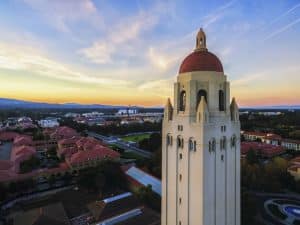
Does Stanford Offer Early Action?

Everything You Need To Know About Direct Admit Nursing Programs

Is College Harder than High School? Insights and Tips

The Best Extracurriculars For Business Majors

How Many Colleges Are in Boston? A Complete Guide

Do Colleges Verify Extracurriculars? A Guide into the Admissions Process

The Best Schools for Biomedical Engineering
Leave a comment cancel reply.
Your email address will not be published. Required fields are marked *
Save my name, email, and website in this browser for the next time I comment.
Recent Articles

Top Target Schools for Investment...

Honors Classes: Are They Worth...

How to Write a Graduation...

A List of UCLA Notable...

The Highest Paying College Majors...

100 Good Argumentative Essay Topics:...

The Best Forensic Psychology Schools...

A Comprehensive Guide to UC...

Creative Club Ideas for High...

Everything You Need To Know...
Sign up now to receive insights on how to navigate the college admissions process..

Admissions Counseling
- Academic & Extracurricular Profile Evaluation
Copyright © AdmissionSight 2024
Privacy Policy - Terms and Conditions
Where to Publish a Research Paper In High School: 18 Journals and Conferences to Consider

By Alex Yang
Graduate student at Southern Methodist University
9 minute read
So you've been working super hard writing a research paper , and you’ve finally finished. Congrats! It’s a very impressive accolade already, but you might still be wondering how to publish a research paper for students. As we’ve talked about before in our Polygence blog, “ Showcasing your work and sharing it with the world is the intellectual version of ‘pics or it didn’t happen.’ ” Of course, there are lot of different ways to showcase your work , from creating a YouTube video to making a podcast. But one of the most popular ways to showcase your research is to publish your research. Publishing your research can take the great work you’ve already done and add credibility to it, and will make a stronger impression than unpublished research. Further, the process of having your work reviewed by advanced degree researchers can be a valuable experience in itself. You can receive feedback from experts and learn how to improve upon the work you’ve already done.
Before we dive into the various reputable journals and conferences to publish your work, let’s distinguish between the various academic publishing options that you have as a high school student, as there are some nuances. Quick disclaimer: this article focuses on journals and conferences as ways to showcase your work. There are also competitions where you can submit your work, and we have written guides on competing in premier competitions like Regeneron STS and competing in Regeneron ISEF .
Publishing Options for High School Students
Peer-reviewed journals.
This is rather self-explanatory, but these journals go through the peer review process, where author(s) submit their work to the journal, and the journal's editors send the work to a group of independent experts (typically grad students or other scientists with advanced degrees) in the same field or discipline. These experts are peer reviewers, who evaluate the work based on a set of predetermined criteria, including the quality of the research, the validity of the methodology, the accuracy of the data, and the originality of the findings. The peer reviewers may suggest revisions or leave comments, but ultimately the editors will decide which suggestions to give to the student.
Once you’ve received suggestions, you have the opportunity to make revisions before submitting your final product back to the journal. The editor then decides whether or not your work is published.
Non-Peer-Reviewed Journals
These are just journals that do not undergo a review process. In general, peer-reviewed journals may be seen as more credible and prestigious. However, non-peer-reviewed journals may make it easier and faster to publish your work, which can be helpful if you are pressed for time and applying to colleges soon .
Pre Print Archives
Preprint archives or servers are online repositories where student researchers can upload and share their research papers without undergoing any review process. Preprints allow students to share their findings quickly and get feedback from the scientific community, which can help improve the research while you’re waiting to hear back from journals, which typically have longer timelines and can take up to several months to publish research. Sharing your work in a preprint archive does not prohibit you from, or interfere with submitting the same work to a journal afterwards.
Research Conferences
Prefer to present your research in a presentation or verbal format? Conferences can be a great way to “publish” your research, showcase your public speaking skills, speak directly to your audience, and network with other researchers in your field.
Student-led Journals vs Graduate Student / Professor-led Journals
Some student-led journals may have peer-review, but the actual people peer-reviewing your work may be high school students. Other journals will have graduate students, PhD students, or even faculty reviewing your work. As you can imagine, there are tradeoffs to either option. With an advanced degree student reviewing your work, you can likely expect better and more accurate feedback. Plus, it’s cool to have an expert look over your work! However, this may also mean that the journal is more selective, whereas student-led journals may be easier to publish in. Nonetheless, getting feedback from anyone who’s knowledgeable can be a great way to polish your research and writing.
Strategy for Submitting to Multiple Journals
Ultimately, your paper can only be published in one peer-reviewed journal. Submitting the same paper to multiple peer-reviewed journals at the same time is not allowed, and doing so may impact its publication at any peer-reviewed journal. If your work is not accepted at one journal, however, then you are free to submit that work to your next choice and so on. Therefore, it is best to submit to journals with a strategy in mind. Consider: what journal do I ideally want to be published in? What are some back-ups if I don’t get published in my ideal journal? Preprints, like arXiv and the Research Archive of Rising Scholars, are possible places to submit your work in advance of seeking peer-reviewed publication. These are places to “stake your claim” in a research area and get feedback from the community prior to submitting your paper to its final home in a peer-reviewed journal. You can submit your work to a preprint prior to submitting at a peer-reviewed journal. However, bioRxiv, a reputable preprint server, recommends on their website that a preprint only be posted on one server, so that’s something to keep in mind as well.
Citation and Paper Formats
All of the journals listed below have specific ways that they’d like you to cite your sources, varying from styles like MLA to APA, and it’s important that you double-check the journal’s requirements for citations, titling your paper, writing your abstract, etc. Most journal websites have very detailed guides for how they want you to format your paper, so follow those closely to avoid having to wait to hear back and then resubmit your paper. If you’re looking for more guidance on citations and bibliographies check out our blog post!
18 Journals and Conferences to Publish Your Research as a High Schooler
Now that we’ve distinguished the differences between certain journals and conferences, let’s jump into some of our favorite ones. We’ve divided up our selections based on prestige and reliability, and we’ve made these selections using our experience with helping Polygence students showcase their research .
Most Prestigious Journals
Concord review.
Cost: $70 to Submit and $200 Publication Cost (if accepted)
Deadline: Fixed Deadlines in Feb 1 (Summer Issue), May 1 (Fall), August 1 (Winter), and November 1 (Spring)
Subject area: History / Social Sciences
Type of research: All types of academic articles
The Concord Review is a quarterly journal that publishes exceptional essays written by high school students on historical topics. The journal has been around since 1987 and has a great reputation, with many student winners going to great universities. Further, if your paper is published, your essays will be sent to subscribers and teachers all around the world, which is an incredible achievement.
Papers submitted tend to be around 8,000 words, so there is definitely a lot of writing involved, and the Concord Review themselves say that they are very selective, publishing only about 5% of the essays they receive.
We’ve posted our complete guide on publishing in the Concord Review here.
Journal of Emerging Investigators (JEI)
Deadline: Rolling
Subject area: STEM
Type of research: Original hypothesis-driven scientific research
JEI is an open-access publication that features scientific research papers written by middle and high school students in the fields of biological and physical sciences. The journal includes a comprehensive peer-review process, where graduate students and other professional scientists with advanced degrees will review the manuscripts and provide suggestions to improve both the project and manuscript itself. You can expect to receive feedback in 6-8 weeks.
This should be the go-to option for students that are doing hypothesis-driven, original research or research that involves original analyses of existing data (meta-analysis, analyzing publicly available datasets, etc.). This is not an appropriate fit for students writing literature reviews. Finally, a mentor or parent must submit on behalf of the student.
We’ve had many Polygence students successfully submit to JEI. Check out Hana’s research on invasive species and their effects in drought times.
STEM Fellowship Journal (SFJ)
Cost: $400 publication fee
Subject area: All Scientific Disciplines
Type of research: Conference Proceedings, Review Articles, Viewpoint Articles, Original Research
SFJ is a peer-reviewed journal published by Canadian Science Publishing that serves as a platform for scholarly research conducted by high school and university students in the STEM fields. Peer review is conducted by undergraduate, graduate student, and professional reviewers.
Depending on the kind of research article you choose to submit, SFJ provides very specific guidelines on what to include and word limits.
Other Great Journal Options
National high school journal of science (nhsjs).
Cost: $250 for publication
Deadline: Rolling
Subject area: All science disciplines
Type of research: Original research, literature review
NHSJS is a journal peer reviewed by high schoolers from around the world, with an advisory board of adult academics. Topics are STEM related, and submission types can vary from original research papers to shorter articles.
Curieux Academic Journal
Cost: $185-215
Subject area: Engineering, Humanities, and Natural Science, Mathematics, and Social Science
Type of research: Including but not limited to research papers, review articles, and humanity/social science pieces.
Curieux Academic Journal is a non-profit run by students and was founded in 2017 to publish outstanding research by high school and middle school students. Curieux publishes one issue per month (twelve per year), so there are many opportunities to get your research published.
The Young Scientists Journal
Deadline: December
Subject area: Sciences
Type of research: Original research, literature review, blog post
The Young Scientists Journal , while a popular option for students previously, has paused submissions to process a backlog. The journal is an international peer-reviewed journal run by students, and creates print issues twice a year.
The journal has also been around for a decade and has a clear track record of producing alumni who go on to work in STEM.
Here’s an example of research submitted by Polygence student Ryan to the journal.
Journal of Research High School (JRHS)
Subject area: Any academic subject including the sciences and humanities
Type of research: Original research and significant literature reviews.
JRHS is an online research journal edited by volunteer professional scientists, researchers, teachers, and professors. JRHS accepts original research and significant literature reviews in Engineering, Humanities, Natural Science, Math, and Social Sciences.
From our experience working with our students to help publish their research, this journal is currently operating with a 15-20 week turnaround time for review. This is a bit on the longer side, so be mindful of this turnaround time if you’re looking to get your work published soon.
Youth Medical Journal
Deadline: March (currently closed)
Subject area: Medical or scientific topics
Type of research: Original research, review article, blog post, magazine article
The Youth Medical Journal is an international, student-run team of 40 students looking to share medical research.
We’ve found that this journal is a good entry point for students new to research papers, but when submissions are busy, in the past they have paused submissions.
Journal of High School Science (JHSS)
Subject area: All topics
Type of research: Original research, literature review, technical notes, opinion pieces
This peer-reviewed STEAM journal publishes quarterly, with advanced degree doctors who sit on the journal’s editorial board. In addition to typical STEM subjects, the journal also accepts manuscripts related to music and theater, which is explicitly stated on their website.
Due to the current large volume of submissions, the review process takes a minimum of 4 weeks from the time of submission.
Whitman Journal of Psychology
Subject area: Psychology
Type of research: Original research, podcasts
The WWJOP is a publication run entirely by students, where research and literature reviews in the field of psychology are recognized. The journal is run out of a high school with a teacher supervisor and student staff.
The WWJOP uniquely also accepts podcast submissions, so if that’s your preferred format for showcasing your work, then this could be the journal for you!
Cost: $180 submission fee
Subject area: Humanities
Type of research: Essay submission
The Schola is a peer-reviewed quarterly journal that showcases essays on various humanities and social sciences topics authored by high school students worldwide. They feature a diverse range of subjects such as philosophy, history, art history, English, economics, public policy, and sociology.
Editors at Schola are academics who teach and do research in the humanities and social sciences
Critical Debates in Humanities, Science and Global Justice
Cost: $10 author fee
Subject area: Ethics and frontiers of science, Biology and ecosystems, Technology and Innovation, Medical research and disease, Peace and civil society, Global citizenship, identity and democracy, Structural violence and society, Psychology, Education, AI, Sociology, Computer Science, Neuroscience, Cultural politics, Politics and Justice, Computer science and math as related to policy, Public policy, Human rights, Language, Identity and Culture, Art and activism
Critical Debates is an international academic journal for critical discourse in humanities, science and contemporary global issues for emerging young scholars
International Youth Neuroscience Association Journal
Subject area: Neuroscience
Type of research: Research papers
Although this student peer-reviewed journal is not currently accepting submissions, we’ve had students recently publish here.
Here’s an example of Nevenka’s research that was published in the November 2022 issue of the journal.
Preprint Archives to Share Your Work In
Subject area: STEM, Quantitative Finance, Economics
arXiv is an open access archive supported by Cornell University, where more than 2 million scholarly articles in a wide variety of topics have been compiled. arXiv articles are not peer-reviewed, so you will not receive any feedback on your work from experts. However, your article does go through a moderation process where your work is classified into a topic area and checked for scholarly value. This process is rather quick however and according to arXiv you can expect your article to be available on the website in about 6 hours.
Although there’s no peer review process, that means the submission standards are not as rigorous and you can get your article posted very quickly, so submitting to arXiv or other preprint archives can be something you do before trying to get published in a journal.
One slight inconvenience of submitting to arXiv is that you must be endorsed by a current arXiv author, which can typically be a mentor or teacher or professor that you have. Here’s an example of a Polygence student submitting their work to arXiv, with Albert’s research on Hamiltonian Cycles.
Subject area: Biology
Type of research: Original research
bioRxiv is a preprint server for biology research, where again the research is not peer-reviewed but undergoes a check to make sure that the material is relevant and appropriate.
bioRxiv has a bit of a longer posting time, taking around 48 hours, but that’s still very quick. bioRxiv also allows for you to submit revised versions of your research if you decide to make changes.
Research Archive of Rising Scholars (RARS)
Subject area: STEM and Humanities
Type of research: Original research, review articles, poems, short stories, scripts
Research Archive of Rising Scholars is Polygence’s own preprint server! We were inspired by arXiv so we created a repository for articles and other creative submissions in STEM and the Humanities.
We launched RARS in 2022 and we’re excited to offer a space for budding scholars as they look to publish their work in journals. Compared to other preprint archives, RARS also accepts a wider range of submission types, including poems, short stories, and scripts.
Conferences to Participate In
Symposium of rising scholars.
Deadline: Twice a year - February and July
Polygence’s very own Symposium of Rising Scholars is a bi-annual academic conference where students present and share their research with their peers and experts. The Symposium also includes a College Admissions Panel and Keynote Speech. In our 8th edition of the Symposium this past March, we had 60 students presenting live, approximately 70 students presenting asynchronously, and over 100 audience members. The keynote speaker was Chang-rae Lee, award-winning novelist and professor at Stanford University.
We’re looking to have our 9th Symposium in Fall of 2023, and you can express your interest now. If you’re interested to see what our Polygence scholars have presented in the past for the Symposium, you can check out their scholar pages here.
Junior Science and Humanities Symposium (JSHS)
Deadline: Typically in November, so for 2024’s competition look to submit in Fall 2023
Subject area: STEM topics
JSHS is a Department of Defense sponsored program and competition that consists of first submitting a written report of your research. If your submission is selected, you’ll be able to participate in the regional symposium, where you can present in oral format or poster format. A select group from the regional symposium will then qualify for the national symposium.
One of the great things about JSHS compared to the journals mentioned above is that you’re allowed to work in teams and you don’t have to be a solo author. This can make the experience more fun for you and your teammates, and allow you to combine your strengths for your submission.
For young writers undertaking a high school research project and understanding how to publish a research paper for students is crucial. Knowing how to identify the right research question and understanding where to publish your research paper are key steps in this journey.
Related Content:
Top 8 Business Journals to Publish Your Research
Why Teens Should Attend the National Student Leadership Conference (NSLC)
How to Brainstorm Your Way to Perfect Research Topic Ideas
Top 20 Most Competitive Summer Programs for High School Students
Research Opportunities for High School Students
Want to start a project of your own?
Click below to get matched with one of our expert mentors who can help take your project off the ground!
INTERNATIONAL JOURNAL OF HIGH SCHOOL RESEARCH
Peer-reviewed by faculty and professionals and open source.
IJHSR has been published since 2019 and is the leading high school research journal. All manuscripts published by IJHSR are indexed internationally by EBSCO and Google Scholar , which makes it available to be searched by most libraries around the world. IJHSR selects the highest quality of high school student research work in all areas of science, including the behavioral and social sciences, technology, engineering, and math. IJHSR publishes both original research or literature review articles. Six issues are published each year. IJHSR has a rolling admission without a deadline and has an open access to public. A publication is a higher level of presentation and requires higher level of detail and work, therefore it is more highly valued when compared to poster or oral presentations.
IJHSR is a publication of Terra Science and Education, a 501.c.3. nonprofit organization.
Terra STEM Scholars
Terra STEM Scholars Program connects STEM scholars with students in their classrooms to increase STEM engagement in schools and help teachers to identify the experts in their region. Read More
Journal of High School Research
Get your high school research published in a peer review journal which is managed by Terra Science and Education. Year around submissions are accepted for quarterly issues. Read More
Terra Educational Data Solutions
TEDS signature program, called TEDS-Pool focuses on creating a single platform where multiple data points about a student from different sources(e.g. SchoolTool, Reneissance, Edoctrina, NYSED) can be pooled in a single location. Read More
Capacity Building Grants
Terra provides up to $5000 as part of its capacity building program. Apllications are due October 1st. Read More

2024 - Accepting

Past Issues
2019 - 2021
IJHSR Categories for publication
How to Submit?
IJHSR Template for submission
Answers for frequently asked questions
AFfiliated organizations

Information about IJHSR

Editorial Staff
IJHSR Editorial Staff
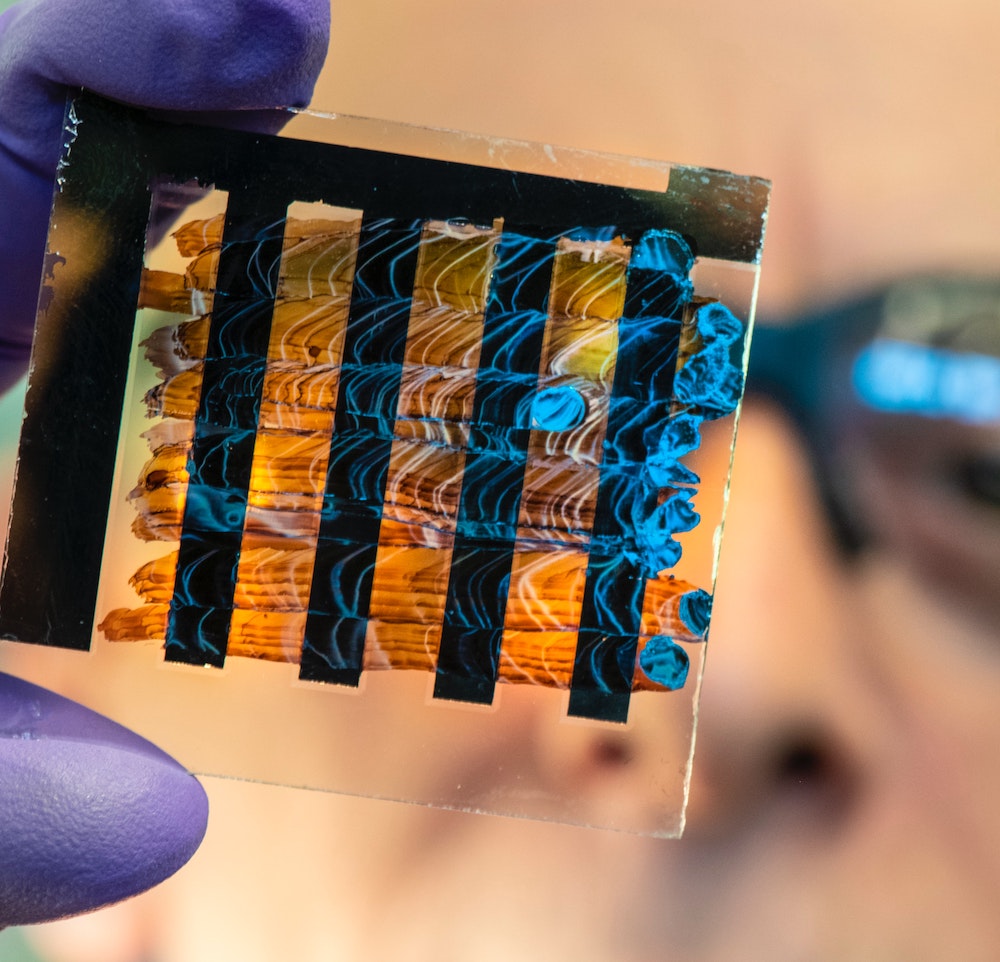
Editorial Board
Editorial Review Board
Partner Organizations
GENIUS Olympiad is an international high school project competition about environmental issues.
ACASU is a rigorous accredidation program with 20 standards for international schools and universities.
International Research Collaborations is a global colloborative scientific research between schools.
- Volume 3 Issue 1 - March 2021
- Volume 3 Issue 2 - May 2021
- Volume 3 Issue 3 - July 2021
- Volume 3 Issue 4 - September 2021
- Volume 3 Issue 5 - November 2021
- Volume 3 Issue 6 - December 2021
- Volume 2 Issue 1 - March 2020
- Volume 2 Issue 2 - July 2020
- Volume 2 Issue 3 - September 2020
- Volume 2 Issue 4 - December 2020
- Volume 1 Issue 1 - February 2019
- Volume 1 Issue 2 - September 2019
- Volume 5 Issue 1 - February 2023
- Volume 5 Issue 2 - April 2023
- Volume 5 Issue 3 - June 2023
- Volume 5 Issue 4 - August 2023
- Volume 5 Issue 5 - October 2023
- Volume 5 Issue 6 - November 2023
- Volume 5 Issue 7 - December 2023
- Volume 6 Issue 1 - January 2024
- Volume 6 Issue 2 - February 2024
- Volume 6 Issue 3 - March 2024
- Volume 6 Issue 4 - April 2024
- Volume 6 Issue 5 - May 2024
- Volume 6 Issue 6 - July 2024
- Volume 6 Issue 6 - June 2024
- Volume 6 Issue 7 - July 2024
- Volume 4 Issue 1 - February 2022
- Volume 4 Issue 2 - April 2022
- Volume 4 Issue 3 - June 2022
- Volume 4 Issue 4 - August 2022
- Volume 4 Issue 5 - October 2022
- Volume 4 Issue 6 - December 2022
RESEARCH AT BAHAMAS

U.S. Schools
International schools.
- STEM Scholars
- pd services
- school development
Grant Development and Writing
- Will work with you to develop your proposal based on a project design provided by your agency.
- Will work with you to develop a proposal budget based on a project design provided by your organization.
- Will work with you to develop any other required documents as needed for submission.
- Will work with you to create management and evaluation plans if needed.
- Will do all copy editing for the proposal and related documents.
- Will work with you to submit the proposal to the granting organization.
Contact Dr. Richard Beal to set up a meeting to discuss the details of your needs.
Terra Science and Education created Terra STEM Scholars Program to connect STEM scholars with schools in their areas to increase STEM engagement in schools and help teachers to identify the experts in their region. Terra connects STEM experts to school classrooms.
The Terra STEM Scholars is made up of local college faculty, STEM practitioners, and graduate students who are ready to interact with school students and their teachers. Scholars can share their expertise through interactive lectures, classroom activities, field experiences, tours, or job shadowing. Extended mentoring opportunities can also be explored in select cases.
School Registration
School Name, Age/Grade level, Interested STEM Area, Interested specific topic (if there is), Month of the year when the Scholar is expected, and any other related information to make the Scholar better prepared.
Scholar Registration
Scholars can expect one volunteered presentation per year, and additional visits in a year will be paid up to $100. You may choose how many engagements you would like to do in a year. Terra will place you within 25 miles of your home or work address.
If you have further questions before committing, please email Dr. Rick Beal ( [email protected] ).
If you are ready to volunteer please Register here!
Terra Science and Education is happy to announce the founding of the Terra Traveling STEM Show. In this program Terra provides STEM educational programing to summer camps organized by area schools and community groups. Terra Traveling STEM Shows can be 1 to 5 days in length and we can fit our programming to meet your STEM content and scheduling needs.
Terra Traveling STEM Shows are presented by the Terra STEM Scholars which is made up of local college faculty, undergraduate and graduate students, teachers, and STEM practitioners who are ready to bring STEM to kids.
One week of programing costs approximately $7,000. Contact our program coordinator for more information or fill out this Interest Form.
Terra professional development is rigorous, current, relevant and appropriate for the professionals in the target audience. Terra continually updates and validates its activities based on emerging research, identified best practices, and student feedback. Terra specializes in professional development focused on education, educational administration, and numerous STEM topics. We can work with you to deliver the professional development experience that you need!
Professional Development Resources
Rick beal ph.d., fehmi damkaci, ph.d..
MEET OUR STAFF
Contract Instructors
- A Masters or Doctorate degree in education or content related to the training
- New York State Teachers Certification
- 10 years of experience in informal education/outreach/college extension
- Be a NYS Principal or Trainer for a NYS approved school district
Post Event Evaluation
Terra’s educational programming is open to local public and private schools.
Terra Science and Education offers new school development including charter schools for writing/managing school proposals. Our team includes experienced school developers, charter school proposal writers, new school program implementers, and establishing new schools, including budgeting, board development, staff recruitment.
- Will work with you to develop your proposal based on a project design provided by your team.
- Will work with you to develop a proposed school budget based on a project design provided by your organization.
- Will guide your team sharing best practices in the field to help you develop a better school program
- Will work with you to submit the proposal
- Will work with you to prepare you for the board interview process.
- Will provide school management and board meeting professional development.

Journal of Student Research
Journal of Student Research (JSR) is an Academic, Multidisciplinary, and Faculty-reviewed Journal (Houston, Texas) devoted to the Rapid Dissemination of Current Research Published by High School Edition , Undergraduate and Graduate students.
Articles Indexed in Scholarly Databases

The journal seeks articles that are novel, integrative, and accessible to a broad audience, including an array of disciplines. The content of the journal ranges from Applied research to Theoretical research. In general, papers on all topics are welcome to submit. The journal uses an automated process from manuscript submission to publication. Manuscript submission, peer review, and publication are all handled online, and the journal automates all clerical steps during peer review.
Trusted By Student Authors Globally

Focus and Scope
Students strive to be successful at publications, and with JSR, authors aspiring to publish will receive scholarly feedback after the reviews of their submissions are received. This feedback will help authors identify areas of improvement to their submission and help them better understand the process to be successful at publication. Once published, we strive to provide a global platform for our authors to showcase their work.

Faculty-Refereed Review Process
This journal uses a double-blind review, which means that both the reviewer and author identities are concealed from the reviewers, and vice versa, throughout the review process. Authors need to ensure that their manuscripts do not give away their identity to facilitate this. To find out more about the review process, please visit the Author Guidelines page. We invite teachers and faculty interested in reviewing articles for this journal; please visit our Reviewers page for more information.
Open Access Policy
This journal provides access to its published content on the principle that making research freely available to the public supports a greater global exchange of knowledge. Learn more about Open Access .
Authors Retain Copyright
Articles published in this journal are under a Creative Commons License , and the authors retain the copyright to their work.
Announcements
Call for papers: volume 13 issue 4.
If you are an undergraduate or graduate student at a college or university aspiring to publish, we are accepting submissions. Submit Your Article Now!
Deadline: 11:59 p.m. August 31, 2024

High School Guide: How to Publish a Research Paper in 5 Easy Steps
Indigo Research Team

We understand how overwhelming the idea of publishing research as a high schooler may seem. It’s true, that the process of submitting and publishing a paper can be very complex and daunting. It needs a lot of preparation and perseverance.
However, publishing research increasingly becomes the " gold " that a college Admission Officer is looking for. Publication in leading journals, like Concord Review, or International Journal for High School Students can showcase your ability and determination to a college admission officer when you apply for college.
Although it seems complicated, worry not! We’ll simplify the steps for you.

This article will break down 5 steps on how to publish a research paper.
1. Find the Right Mentor for Your Research Purposes
Can you write a research paper on your own? Yes, you can. But, it would be extremely difficult. Finding the perfect mentor is key to having a smooth ride. As an aspiring high school student, you'll want guidance from someone who shares your intellectual interests and can offer expertise in your field of study. Mentors can also help you find information about publishing research as well as where to publish a research paper.
“If you cannot see where you are going, find someone who has been there before.” - J.L. Norris
To find a mentor, first , you need to reflect on your goals and needs. Ask yourself these questions:
• Do you want help developing research questions? • Feedback on a draft? • Opportunities to co-author a paper?
Defining what you hope to gain from mentorship will help determine who may be the best fit.
Secondly, once you know (in general) who you want to work with, you can start your search by browsing the faculty profiles on your school’s website or research database like academia.edu or you can also utilize social media platforms like LinkedIn. Look for professors with expertise in your areas of interest.
It’s important to reach out in the right manner for them to notice you. Remember, you are the one who needs their help and not the other way around. Therefore, the way you reach out online is very crucial to get their attention. Keep in mind that you should do thorough research about this person before sending a message. Here’s an example of a short template message you can use for initial communication on LinkedIn:
Dear Professor [Last Name],
I'm [Your Name], a high school student passionate about [Your Research Interest]. Impressed by your work in [Their Field]. I'm very intrigued by your argumentation about [Topic]. I’m looking for a mentorship for a project I'm planning. Your guidance would be invaluable. Could we discuss this possibility
Looking forward to hearing from you. Best,
[Your Name]
Third, if you still can’t find an available mentor, you should also expose yourself to new ideas by attending guest lectures, joining online forums, and reading publications in your field. You can also find mentors who have published research papers that you are interested in. Engage with the material by asking questions. This demonstrates your passion for learning and can lead to finding a mentor.
While finding a mentor can be a bit of a hassle, you can check out our mentors and find the mentor of your preferences. After you have found your mentor, you can start doing the second step.
2. Choose an Exciting Research Topic That Interests You
Choosing topics that you are deeply passionate about or interested in is the key to keeping you motivated until the end of the research.
Discover Your Passions or Interests
There are many passion project ideas that you can explore. But you can always start by asking:
• What do you love to read about or discuss with friends? • Are there any social issues you care deeply about? • What are the topics related to your hobbies, favorite books or movies, sports teams, and travel destinations? • Or do you like more of the popular subjects in your school like biology, chemistry, computer science, psychology, or genetics? Look for topics that spark your curiosity or creativity.
Find an Opportunity Gap
Review what research has already been done on topics that interest you. Look for areas that could use more exploration or that you could investigate further. Think about new angles, questions, or perspectives you might bring to the subject. Finding an unexplored niche in a broader topic area can lead to an exciting, original research paper.

Talk to Your Mentor
Discuss ideas with your mentor, especially if you have an area of study in mind but need guidance narrowing down to a specific, manageable research question. Your mentor may be able to suggest topics that would work well for a research paper and align with standards or curriculum. They can also help determine if a topic idea is too broad or narrow, or if resources will be readily available.
Application of the Research in Reality
Choose a topic that could have real-world implications or applications. How can your research paper help real-world problems?
Think about local issues in your community or school that could be addressed or improved through research. Papers investigating practical solutions or the effectiveness of policies, programs, or interventions tend to be very compelling.

3. Choose the Right Journal or Conference to Publish Your Research Paper
“Where can I publish my research paper?”
You can publish your research paper through respectable journals, conferences, or research paper competitions. It's important to have a goal in mind before starting any research paper. Determining this in the beginning might help you to stay on course and motivated.
Consider the Scope of the Selected Journals
Decide the scope then look for publications that focus on your area of study or research topic. Are you looking to publish a research paper in an international journal? Or are you aiming for more local journals?
Double-check that the journal accepts submissions from high school students and check their reputation. Aim high, but be realistic. See if any professors or mentors can recommend appropriate platforms. Review the editorial board and see if top researchers in your field are involved.
Examples of the journals that can publish your research paper as a high schooler include:
- Concord Review
- The National High School Journal of Science
- STEM Fellowship Journal
- Journal of Student Research
- Journal of High School Science (JHSS)
- International Journal of High School Research (IJHSR)
“Where can I publish my research paper for free?”
Here are some journals where you can submit your research paper for free, but be aware some of them require a publication fee:
- Journal of Emerging Investigators (JEI)
- Young Scientist Journal
- Youth Medical Journal
- Journal Research High School
- Hope Humanities Journal
- International Youth Neuroscience Association Journal
- Whitman Journal of Psychology
Review Submission Guidelines
Once you’ve set your mind and chosen your goal, carefully read and follow the instructions for authors. Pay attention to formatting, abstract length, images, and anything else specified. Following the guidelines shows you understand publishing norms in your field.
4. Conduct Thorough Research, Write and Format Your Research Paper Properly
Now that you have selected a topic and compiled sources, it's time to dive into your research and start writing. Publishing a research paper in a journal requires thorough research and a properly formatted paper.
- Analyze and read all of your resources and take notes on the key ideas, facts, questions, examples, data, quotes, and arguments that might be relevant to your research project. Keep it organized into an outline.
- Determine your research question and consult with your mentor. Once you begin drafting your paper, be sure to paraphrase, summarize, and quote the right citation.
- Carefully proofread and format your paper. Double-check for any spelling, grammar, or punctuation errors. Ensure your paper follows the recommended style guide for font type and size, spacing, margins, page numbers, headings, and image captions.
Of course, writing a research paper is not as easy. If you need guidance, you can also try to join research programs that will allow you to finish the research paper easier.
5. Review Before Submitting Your Research Paper and Respond to Feedback
Once your paper is complete, it's time to share your work with the world.
Review Your Research Paper
Before making this incredible step, review your research paper once again. Have a teacher or mentor check your paper to ensure it meets the journal's standards. Put together a cover letter introducing yourself and your research. Explain the importance of your work and most importantly, why they need to publish your work.
Anticipate Feedback
Even after submitting, your work isn't done. Journals will send your paper out for peer review by experts in the field. Reviewers may suggest changes to strengthen your paper before it can be accepted. Don't get discouraged—even professional researchers incorporate feedback! Address each comment thoroughly and openly. Making revisions will improve your paper and help you become a better writer and researcher.
How Long Does it Take to Publish a Research Paper?
In general, the publication process can take several months to a year or more from the initial submission to final publication. It depends on the institutions and the availability of the peer reviewers. If your paper is accepted for publication, congratulations! If not, use the experience as an opportunity to improve. Carefully consider the feedback and see it as a chance to strengthen your methods, arguments, and writing. Don't hesitate to submit to another journal or work with your mentor to revise and resubmit.
That’s it! Congratulations on finishing all the steps!
Whether or not you get published, finishing the research paper is an achievement in itself. We hope that this article on how to publish a research paper will help you to get your research paper published. Remember that persistence, attention to detail, and a clear understanding of your target journal's guidelines are key. Stay determined and keep researching. You got this!
Need more guidance to do your research paper and most importantly, publish your paper? Don't worry, we've got you! At Indigo Research, we connect you with leading professors from renowned universities who are eager to mentor you and support you in publishing your research!
Click to discover more about how we can help!
The Journal of Emerging Investigators is a science journal and mentorship program publishing research by middle and high school scientists

Star anise and oregano essential oil: A comparative evaluation of antibacterial effect
Shamsudeen et al. | Jun 01, 2024
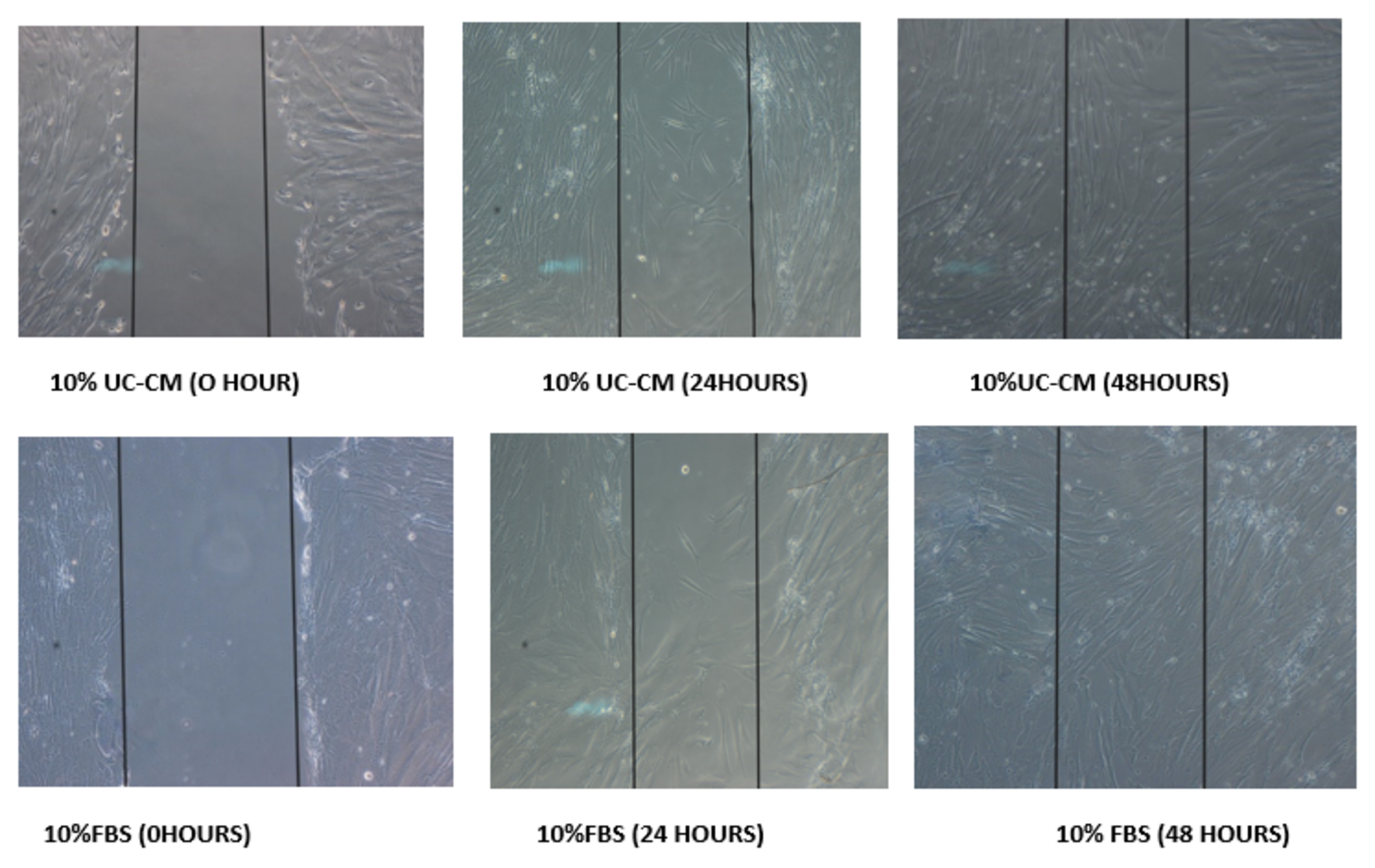
Unveiling the wound healing potential of umbilical cord derived conditioned medium: an in vitro study
Vasal et al. | Jun 17, 2024

Racial disparities in school discipline in Collier County, Florida
Khan et al. | Jun 21, 2024
Latest Research
Biological sciences.

Impacts of the gut microbiota on arginine synthesis
Lane et al. | Aug 15, 2024

A HOG feature extraction and CNN approach to Parkinson’s spiral drawing diagnosis
Tripathi et al. | Aug 09, 2024

Using Artificial Intelligence to Forecast Continuous Glucose Monitor(CGM) readings for Type One Diabetes
Jalla et al. | Aug 07, 2024
Physical Sciences and Engineering
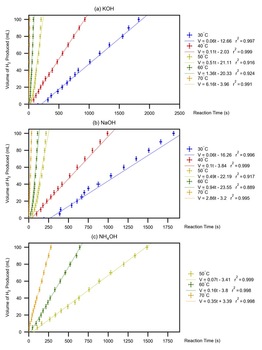
Exploring the possibilities for reactions between SiW and alkaline solutions to be renewable energy sources
Chou et al. | Aug 15, 2024

Quantifying kitchen appliances’ phantom loads using a shifted gamma distribution model
Gan et al. | Aug 15, 2024

Color photometry and light curve modeling of apparent transient 2023jri
Favretto et al. | Aug 13, 2024
Social Sciences

Low female employment rates in South Korea are linked to the gender-specific burden of childrearing
Lee et al. | Aug 07, 2024

Investigating cross-cultural emotional responses to world music under simulated hearing loss
Raghavan et al. | Jul 23, 2024

The effect of reiki, a Japanese relaxation technique, on stress in middle schoolers
Balaji et al. | Jul 11, 2024
What is JEI?
Featured scientists.
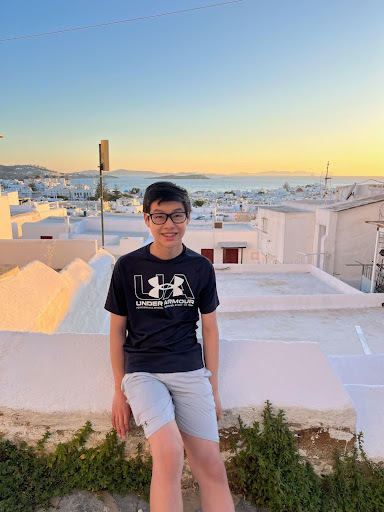
Twelve projects at the Terra North Jersey STEM Fair received special recognition with the JEI Featured Young Scientist Award. Read about one of the young scientists, Michael, below.
View All Featured Scientist Articles
Want More JEI?
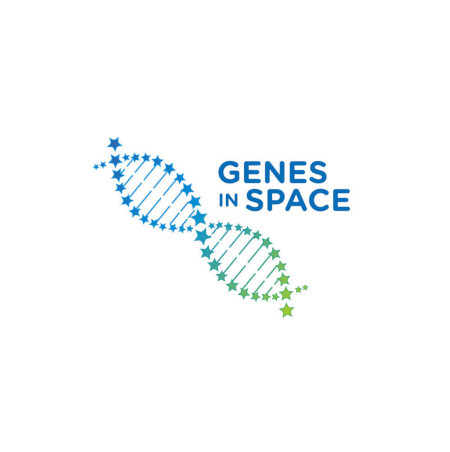
Latest Issue
View Our Latest Issue
Or View Older Monthly Issues


- 630 730 8825
How to Publish Research as a High Schooler
Kevin krebs.
- Last Updated on July 4, 2024
Table of Contents

If you’re a high school student passionate about a particular subject, undertaking an academic research project is one of the best ways to explore your interests, build critical thinking skills, and showcase your academic abilities beyond the classroom. Getting your research published is an extra step that both validates your work and signals to colleges that you’re ready to take on more advanced projects.
Publishing as a high schooler might seem daunting, but there are many publications dedicated to rewarding and showcasing outstanding work from young academic researchers. In this blog post, we’ll explore how to publish research as a high schooler and highlight 10 research journals that publish high school students.
What it Means to Publish Research as a High Schooler
Publishing your research means that you have gone through a rigorous, peer-reviewed process that has analyzed, critiqued, and accepted your research. Scientific publications are gatekeepers to the broader world. If a research piece is not published by a journal, it means that it has not yet passed a rigorous, external analysis of the research.
Why Publish in High School?
Publishing your research offers several benefits, including:
Recognition and Validation
Having your work published means validation of your work from the academic community.
Skill Development
The publishing process sharpens key academic and professional skills like research, writing, and communication.
College Applications
A published paper can significantly enhance your college applications , setting you apart from other applicants.
Contribution to Knowledge
Your research could contribute valuable insights to your field of interest.

While publishing your research may be lengthy and time-intensive, the process can be simplified to four steps:
1. Select the right journal.
The first step is to research academic journals that accept submissions from high school students. Some journals have dedicated sections for work by high schoolers while others only publish research from contributors under the age of 18. When selecting a journal, pick one (or several) that align with your research topic and pay close attention to details like word requirements and special criteria.
2. Prepare your paper for submission.
Read your chosen journal’s submission guidelines and format your paper accordingly. This often requires organizing your research into sections and preparing an abstract and/or cover letter.
3. Submit your paper.
Most journals accept submissions online. Before submitting your research, double-check that all required materials are included, correctly formatted, free from errors, and uploaded according to that journal’s specific guidelines.
4. Respond to feedback and revise.
Once your research is peer-reviewed, you should expect to receive feedback. The journal may ask questions, seek additional information, or request revisions to your paper. After making necessary revisions, resubmit your paper according to the instructions.
10 Research Journals that Publish High School Students

Below is a list of 10 research journals that publish high school research on a variety of academic subjects:
1. Open Journal of Business and Management (OJBM)
The OJBM is an international journal dedicated to the latest advancement in the study of business and management. The goal is to platform academics all over the world to promote, share, and discuss issues and developments related to business and management. While most of the contributions come from more experienced researchers, OJBM is one of the few journals to accept high school research projects in business and management.
Subjects: Economics and Business
Estimated Acceptance Rate: 15-20% (for high schoolers)
2. Columbia Junior Science Research Journal
The Columbia Junior Science Research Journal is a highly prestigious research journal for high school students interested in the natural sciences, physical sciences, engineering, and social sciences. CJSJ originated from the Columbia Undergraduate Science Journal and is run by the same editorial staff. It promotes the development of young researchers versed in technical and communication skills, facets encoded into the DNA of Columbia University.
Subjects: Natural Sciences, Physical Sciences, Social Sciences, and Engineering
Estimated Acceptance Rate: 3%
3. The Young Researcher
The Young Researcher is a peer-reviewed journal edited by secondary school students working closely with scholars and active researchers at universities and in the community. The journal’s mission is to provide a larger audience for the original academic research of high schoolers, a forum for peer-review, and a community of young researchers. In addition, the journal strives to advance the quality of academic writing in secondary schools.
Subjects: Social Sciences, Humanities, and Physical Sciences
Estimated Acceptance rate: 65%
4. The Schola
The Schola is a journal of humanities and social sciences essays contributed by high school students all over the world. They accept essays written on topics in philosophy, history, art history, literature, politics, public policy, and sociology. If your essay is selected, The Schola gives you the full academic publishing experience—presenting research findings to a publisher, receiving editorial feedback, and editing the manuscript. Each student has a personalized editorial experience through the process.
Subjects: Humanities
Acceptance Rate: They do not disclose their acceptance rate, but it’s safe to say this is a rigorous and highly selective journal.
5. The Concord Review
The Concord Review is a quarterly journal publishing history essays and the most prestigious journal in the country for high school students. Its prestige comes from its high level of selectivity, quality of research, and long history of contributors going on to top universities. The quality of writing for the published papers is also very high, with the average length of papers published at 9000 words (the longest was 21,000!). Only eleven students are chosen worldwide for each issue.
Subject: History
Estimated Acceptance Rate: < 5 %
6. Journal of Emerging Investigators (JEI)
The Journal of Emerging Investigators is a peer-reviewed journal for middle and high school students, focusing on the biological and physical sciences. Under the guidance of a teacher or advisor, JEI gives students the opportunity to gain feedback on original research and publish their work in a peer-reviewed journal. JEI accepts work that comes from classroom-based projects, science fair projects, or other forms of mentor-supervised research. While the JEI website heavily promotes STEM research, the journal also accepts research from other disciplines, as long as it is original and hypothesis-driven.
Subject area: STEM, but open non-STEM
Estimated acceptance rate: 70-75%
7. Young Scientist Journal
The Young Science Journal is a product of the Vanderbilt Center for Science Outreach, a group that works in the field of scientific and technological literacy through unique partnerships between Vanderbilt University scientists, K-12 educators and students, and the local and global science community. Open to students aged 12 to 20, this journal covers science, engineering, and mathematics, offering a platform for young researchers worldwide.
Subjects: STEM
Estimated Acceptance Rate: 10-15%
8. Walt Whitman Journal of Psychology (WWJOP)
The Walt Whitman Journal of Psychology is a nationally recognized psychology journal run by high-school students for high-school students. The WWJOP is published bi-annually and electronically and reaches hundreds of schools and psychology students around the world. It is one of the few journals at this level to offer a subject specialization in the field of psychology.
Subject: Psychology
Estimated acceptance rate: 20-30%
9. Journal of Research High School (JRHS)
The Journal of Research High School is an open-access online research journal that aims at publishing academic work prepared exclusively by high school researchers. It is managed by a team of volunteer professional scientists, researchers, teachers, and professors. JRHS serves as a stepping-stone for high school authors to become experienced researchers with improved skills in the early stage of their academic life. The organization also has a platform where students can interact with other peers while at the same time gaining access to their academic works.
Subject: Any academic subject including the Sciences and Humanities
Estimated Acceptance Rate: 30%
10. Curieux Academic Journal
The Curieux Academic Journal is a youth-led nonprofit founded in 2017 to publish research by high school and middle school students. They currently operate in California but have editors from across the nation. They are open to submissions from any academic subject, including the sciences and humanities, and encourage all forms of academic writing including but not limited to research papers, review articles, and humanity/social science pieces. Curieux works well as a backup publication for students pursuing research in the social sciences and humanities since they publish twelve issues per year and have a relatively higher acceptance rate.
Subjects: Engineering, Humanities, Natural Science, Mathematics, and Social Science
Estimated Acceptance Rate: 60-70%
Publishing research as a high school student is more than an academic accomplishment; it’s a formative experience that lays the groundwork for future success. Publishing offers a platform to share your discoveries, build your skills, and contribute to your field of interest in a meaningful way. Students who undertake this challenge learn more about their chosen topic, but also about perseverance, critical feedback, and the satisfaction of contributing knowledge to the world. The path to publication is demanding, but by following this guide and exploring the many publications open to high school students, you’ll discover that the rewards are worth it.

How to Write the UPenn Supplemental Essays
If you aim to join the ranks of UPenn’s elite students, you’ll need more than good grades and

How Much Does a College Counselor Cost?
The road to college is no longer a simple and straightforward path. Gone are the days of banking

How to Write a Good Hook for a College Essay
Think about your favorite book or movie: How does it start? Is there action or mystery? Does the
Upcoming College Admissions workshops:

College App Essays: Let’s Get Started
The personal statement is a student’s chance to make their application successfully stand out. Learn strategies to write essays that impress.

The Common Application: A Success Guide
You're entire family is invited to join us for a power-packed Common Application workshop. We’ll cover everything you should be doing now from strategic planning and deadline management to crafting standout activities, the personal statement, and securing letters of recommendation.

Your Standout Factor: The Key to Admissions Success
Crack the code on getting into highly selective schools.
We are dedicated to helping students and parents successfully navigate the college admissions process, providing a personalized experience based on your unique needs and goals.
Remote Locations
- 1415 W 22nd St Tower Floor, Oak Brook, IL
- 5570 FM 423 Suite 250-2119 Frisco, TX
- 2590 Welton St Ste. 200 #1031 Denver, CO
- 12800 Whitewater Drive Suite 100-2033 Minnetonka, MN
Quick Links
- Kevin Krebs, Founder
- 630-730-8825
- Schedule Consultation
- Employee Login
- Member Login
- News and Press
© HelloCollege 2022. All Rights Reserved.

Your College Admissions Journey, Mapped Out!
Introducing our college planning timeline with a handy checklist of essential tasks, a step-by-step guide for every grade level, from freshman to senior year, AND financial aid, college applications, extracurricular activities, and more.

Publishing academic research is becoming a common way for the top high school students to distinguish themselves in the admission process. Yet, for many students what publication is and how to approach it is unclear and confusing. This guide’s goal is to provide a starter for any students interested in research and publication. It comes from the result of working with 500+ students as part of the Lumiere Research Scholar Program.
What does it mean to “Publish Your Research?” What does publication even mean? In short, publishing your research means that you have gone through a rigorous, peer-reviewed process that has analyzed, critiqued, and ultimately accepted your research as legitimate. Scientific publications are gatekeepers to the broader world. If a research piece is not published by a journal, it means that it has not yet passed a rigorous, external analysis of the research.
Publications use a process called the “peer review” which means that fellow researchers in the same field will analyze the paper and its contribution and give feedback to the authors. This process is often double-blind, meaning that the reviewer does not know who the author is and the author does not know who the researcher is.
Is it possible for a high school student to publish their research? The short answer is yes. The longer answer, detailed below, is that there are many different types of journals that have different selectivity rates and bars for rigor. Just like universities, some publications are extremely competitive and provide a very strong external signal for the author. Some journals are less competitive and so provide a less powerful signal. For high school students, there is an emerging group of journals focused on high school or college-level research. These journals understand the limitations of high school students and their ability to do research, and so they are often more feasible (though still difficult) for students to get into. We’ll explore some types of those journals below.
Why publish your research in high school But, why even go to the trouble of publishing? Does it really matter? The short answer again is that it does matter. Publication in a top journal, like the Concord Review , can provide a valuable signal to a college admission officer about your work.
One thing to consider is who is an admission officer (for US universities). These people are usually generalists, meaning they have a broad background, but do not have researcher-level depth in many fields. That means it’s difficult for them to distinguish good research from bad research. What is rigorous and what is just put on an application?
This means that admissions officers search for signals when evaluating research or passion projects. Was the project selected into a selective journal? Did it go through a peer-review process by respected researchers? Was it guided by a researcher who the admission officer would believe? Did the research mentor guide speak positively about the student? All of these are positive signals. The publication is thus not the only way to signal ability, but it is one of the most important for young researchers.
What type of research can get published?
Most types of research can be published. But, the more original research that you can do, the broader the options you have. In other words, if you write a literature review, then your writing and synthesis must be very strong for it to be eligible for most publications. If you do some form of data collection or new data analysis, then the bar for rigor in student publications is usually a little bit lower as the difficulty to do this type of data collection or analysis is higher.
Types of Publication Targets
At Lumiere, we think of publications like students think of universities. There are research journals (most selective), target journals, and safety journals. In short, journals range in their selectivity and rigor. The more selective the journal, the better a signal it gives.
Highly Selective High School & College Publications
The first type of journals that students should think about are highly selective high school & college-level publications. These journals include the Concord Review or the Columbia Junior Science Journal . For example, one Lumiere student’s research was recently admitted to the Cornell Undergraduate Economic Review, a rigorous college-level journal for university-level economic papers. This student was the first high school student to ever be published in the journal, a clear signal.
These journals include both a review process and a limited number of spots in the journal. The Concord Review, for example, accepts about 45 student research papers each year of an estimated 900 submissions. The Columbia Junior Science Journal, similarly, publishes between 10-20 papers each year. Most of these journals will require original research or data collection of some sort.
Rigorous, Peer Reviewed High School Publications
The next level of journals are rigorous, peer-reviewed publications. These journals, such as the Journal of Emerging Investigators or the Journal of Student Research , have a peer-review process. These journals have requirements on the type of papers that are accepted (e.g., some will accept new data analyses, some will accept literature reviews). These journals do not have a certain number of slots predefined, but they do have a bar for what type of research they will accept. For these journals, students will submit their paper and the journal will assign (or ask you to identify) a potential set of reviewers for the paper. These reviewers will be researchers in the field, who hold a PhD. The reviewers will then give back comments. The Journal of Emerging Investigators stands out here among these journals as being one of the most rigorous and providing the most in-depth, critical feedback to students.
Pay to Play Research Journals (AVOID THESE) Finally, there are some journals that are essentially “Pay-to-play” meaning that they will accept any paper as long as a fee is paid. These journals are not only not academically ethical, they can actually be a bad signal in the admission process. For example, I spoke with a former Harvard Admission Officer, Sally Champagne , about her experience with publications. During the late 2000s, there was a high spike in students from Russia submitting “publications” that all linked back to a few fraudulent journals.
You can spot a fraudulent journal if there is a high fee for submitting the paper (some journals will charge a nominal fee to recoup their costs. That is OK, especially if they have a financial aid waiver). If any paper you submit is accepted without any revisions or feedback, then this is also a sign that the publication is not rigorous.
PhD Level Publications in A Field Finally, there are publications that PhD researchers or professors target with their research. These journals are highly selective and can take years of back and forth in order for a paper to be admitted. In general, we do not recommend high school students who are working on independent projects to target these journals for their difficulty and time required. The most common way to target these journals is if you act as a research assistant for a researcher on an existing project and you are credited as a supporting author.
Other Publication Options Beyond journals
There are other ways to showcase your research. I highlight some of those below.
Practitioner publications Another way to showcase your work is to target respected practitioner publications. These are places where non-researchers go to learn about developments. For example, one student in Lumiere published a piece in Tech In Asia summarizing his research on Open Innovation and the Ventilator Market (Tech In Asia is the Tech Crunch equivalent in South East Asia). Other practitioner publications include Online Magazines like Forbes or the Financial Times, local newspapers, or online blogs like the Huffington Post can all serve as possible targets. Generally publications in these places requires direct contact with an editorial manager, who can take a call as to whether your work is appropriate or not. To get to these editorial managers, you’ll need to do some online search and send them a pitch email that explains why your work is relevant to their audience. Offering an “exclusive” can be one additional way to make it attractive to the editors.
Research Conferences Another place to showcase your research is in research conferences. In some fields, like computer science, conferences are actually more common places to publish work than journals. One advantage of research conferences is that they often will accept abstracts of research instead of full-length research articles, making the amount of effort required to get accepted lower. As well, many conferences want more researchers to populate the conference, again making the admission process easier. Example conferences for high school students to look at include the Harvard Science Research Conference or the Sigma Xi Annual Meeting . There are also field specific conferences that you should search for based on your research paper.
Competitions
Finally, a common way to showcase your research is in the form of a student competition. Science fairs, such as ISEF Regeneron , is one common way for students to showcase their work. But, there are dozens of others, including the Genius Olympiad (Environmental Issues), John Locke Essay Competition , or the STEM Fellowship Competition . Competitions can be one of the highest impact ways to show your work because it’s clear signaling. If you can win a competition with hundreds of entrants, then being able to write about it in your application shows your unique ability. In addition, competitions can often be submitted to parallel with other research publications (check your publications requirements before doing that though!).
The Final Word – Publication Can Be High Impact
If you have already written a research paper, then I highly encourage you to think about submitting it to high school or college level publications. The majority of work that you have done is spent on the research paper itself. So, if you can spend an additional 10-20 hours to showcase your research, then it’s highly valuable for you.
FAQ About Publications
- Do I need to publish my research for it to be impactful? No, but it provides a useful signal. Doing research alone is a rare and impressive way for students to showcase their academic depth. If you can publish that research, it adds a layer of external legitimacy to that research.
- Can I publish a research that is a literature review? Yes, though, you’ll have to think of which target journals accept that. For example, the Journal of Student Research and the STEM Fellowship Journal both accept literature reviews, but the Journal of Emerging Investigators does not. In general, the more original research that you do (i.e., data analysis, data collection, etc.) the broader the range of publications you can target. With that said, some fields (e.g. astrophysics) can be particularly difficult to do new data collection as a high school student, so for those fields a rigorous literature review is usually the best choice.
- Are all publications the same? No. Publications are like universities. Some are highly respected, selective, and rigorous and others are not. The key is for you to identify a journal that is as selective/respected as possible that you can get into. Watch out for pay-to-play journals, as they can become negative signals for you and your application.
Stephen is one of the founders of Lumiere and a Harvard College graduate. He founded Lumiere as a PhD student at Harvard Business School. Lumiere is a selective research program where students work 1-1 with a research mentor to develop an independent research paper.
Stephen Turban, Lumiere Education
< Older Post
Newer Post >

Why Educational Planners Choose CounselMore

Aspiring IECs and College Counselors

Don't Miss This Chance
Post your article on the CounselMore Blog

CounselMore members enjoy more benefits

Slide title

Pay Attention! Early Action and Decision

Finding a Research Lab as a High School Student
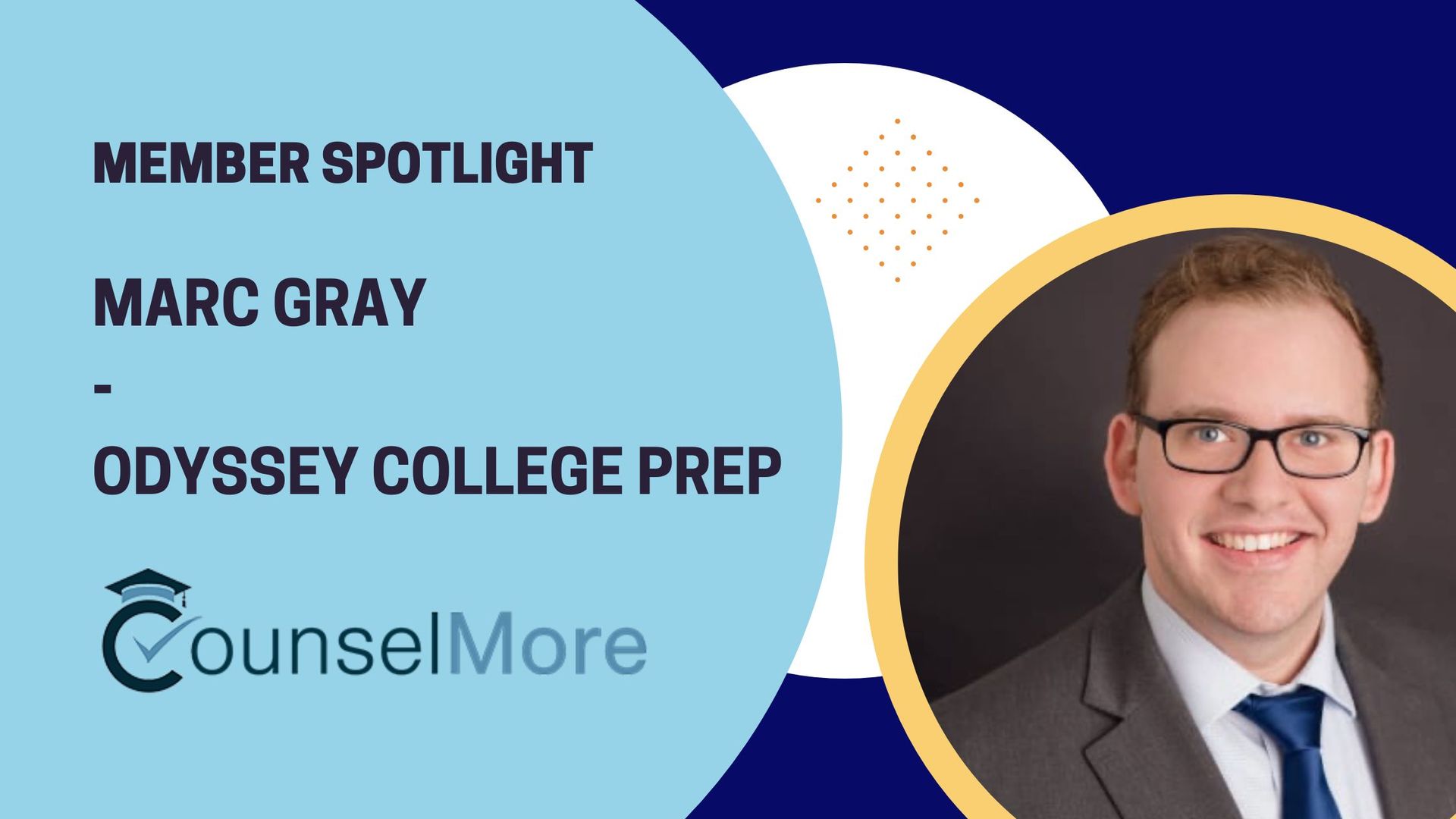
CounselMore Member Spotlight: Marc Gray - Odyssey College Prep

Navigating College as a First-Generation Student

How to Become an IEC Referral-Generating Machine!
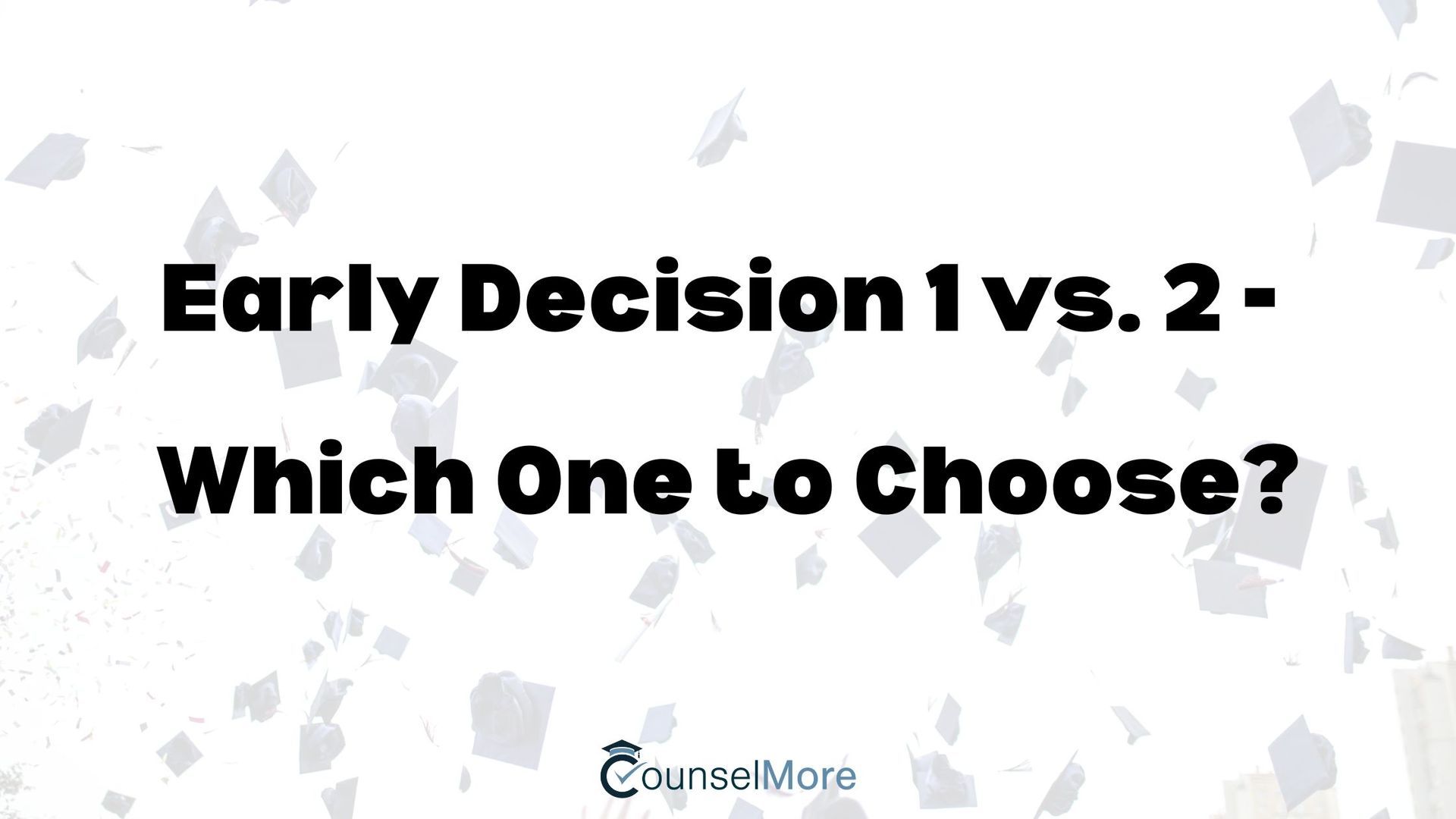
Early Decision 1 vs. 2 - Which One to Choose?

Early Decision vs Early Action Series

The Four-Year Academic Plan as an IEC Business Gamechanger

Becoming an Educational Consultant - Series Wrap-Up

Connecticut's Bold Move: Towards Ending Legacy Admissions in Higher Education
Terms & Conditions • Privacy Policy
Curieux Academic Journal
As Featured In
The Curieux Academic Journal is a youth-led nonprofit founded in 2017 to publish exceptional research by high school and middle school students. We currently operate in California but have editors from across the nation. Submitting your paper to Curieux is a great way to get experience in the craft of academic writing, learn from our editors, and help your ideas blossom. We are open to submissions from any academic subject including the sciences and humanities. We are dedicated to helping students nationwide reach their potential and dive deeper into research. Happy Writing!

"The most important thing is not to stop questioning. Curiosity has its own reason for existing."
-Albert Einstein
Los Angeles, California

+1 (603) 932 7897

17 Research Journals for High School Students
- Last modified 2024-06-06
- Published on 2023-07-20
Enhance Your Research Skills with Aralia’s Research Scholar Classes
1. the concord review.
Introduction: The Concord Review (TCR) is an academic research journal dedicated to publishing historical research papers written by high school students in English. In the spring issue, the quarterly journal has published 1,362 research papers from authors in 46 states and 41 countries. Many TCR authors have gone to prestigious universities and colleges across the U.S. and worldwide. Aralia also published the Guide to the Concord Review to guide students through the process of submitting for the Concord Review, along with the introduction of the Historical Research and Writing class.
Competition Format: All essays should be on a historical topic, although the topic can be in any time period from ancient to modern, and any area from domestic to foreign. Essay submissions must be 5,000-9,000 words, with Chicago-style endnotes and a bibliography. The student must be the sole author of the submission, and the research paper may not be published elsewhere except for a publication of the secondary school the student attends. Students can submit more than one research paper.
Eligibility : Secondary students from all countries and schools can participate.
Deadline : Summer Issue – February 1 / Fall Issue – May 1 / Winter Issue – August 1 / Spring Issue – November 1
Fee : Range from $70 – $150 depending on which type of membership level students want to sign up for. Each author who submits a paper and submission fee, receives the next four issues of the journal in eBook (or print for $30).
Membership Details (Annual Fee):
- Author – eBook – $70.00 (USD): With your essay submission fee of $70, you will receive a complimentary 1-year subscription to the Electronic (eBook) Edition of The Concord Review. You can choose the Print Edition instead for an additional $30 + shipping and handling.
- Author – Print US – $110.00 (USD): Your essay submission fee of $100 + s&h entitles includes a 1 year subscription to the Print Edition of The Concord Review delivered to your US address.
- Author – Print International – $150.00 (USD): Your essay submission fee of $100 + s&h includes 1 year subscription to the Print Edition of The Concord Review delivered to your address outside the United States.
2. (JEI) Journal of Emerging Investigators
Introduction : The Journal of Emerging Investigators is an open-access science journal and mentorship program that publishes research by middle and high school scientists. JEI is a non-profit organization operated by graduate students, postdoctoral fellows, and professors across the United States. Graduate students contribute to the editorial and review processes, as well as the management of the journal. Since 2012, JEI has published over 250 papers by pre-college students. A sample research paper written by students and published in this journal, titled “A simple printing solution to aid deficit reduction” , was covered by CNN .
Submissions go through 4-6 stages of review after the manuscript is received. Summer and fall tend to be busier times for JEI, so research submitted at these times may take longer to go through the review process.
Eligibility : Middle and high school students.
Topic Guideline : Students have the freedom to choose their research topic. However, for all research related to vertebrate animal/human subjects , students are required to adhere to the Intel International Science and Engineering Fair (ISEF) guidelines for ethical research.
Review Timeline : Submissions are accepted on a rolling basis.
Fee : The subscription is free for students.
3. Columbia Junior Science Research Journal
Introduction : The Columbia Junior Science Journal is a high school research journal for students with an interest in the natural sciences, physical sciences, engineering, and social sciences. CJSJ originated from the Columbia Undergraduate Science Journal, a professional-level science journal for scholars. The editorial team of the Columbia Undergraduate Science Journal also oversees CJSJ.
Eligibility : High school students worldwide can submit a single one to two-page research paper, or four to five-page review paper. Students can also collaborate with peers and mentors on their submissions.
Submission Deadline : Sep 30, 2024 (based on last year’s deadline)
4. Journal of Student Research
The Journal of Student Research (JSR), an academic, multidisciplinary, and faculty-reviewed journal, is based in Houston, Texas. This journal is devoted to the rapid dissemination of current research published by high school, undergraduate, and graduate students. It accepts AP, IB, Honors Research Articles, Review Articles, Research Projects, Research Posters, and more. Over 2,000 student authors from high schools and universities worldwide have had their work published in JSR.
Only five authors (including advisors) are allowed per submission. If you would like to include more contributors, you must pay $25 per individual. For a fast-tracked review, you can contact the journal and pay a fee.
Fee : $50 at submission for pre-review, and $200 post-review for articles chosen for publication upon notifying the authors.
Deadline : February 29, 2024
5. The Young Researcher
The Young Researcher is a peer-reviewed journal for secondary school students. The editor board includes expert researchers – typically, academics who work as professors in universities, or people with extensive research and publication experience.
List of the editors .
Submission Guideline: Submissions should be no more than 5,000 words, excluding references and appendices (in English). Articles should have:
- Abstract + 4-6 keywords
- Introduction
- Literature Review
- Method, Process, or Approach
- Findings or Results
- Analysis, and/or Evaluation
- Conclusion and Future Directions
The paper can be formatted in any acceptable citation style (MLA, APA, and Chicago). Upon submission, at least three expert editors will review the submission and will provide revisions upon selection for publication.
Deadline : May 1, 2024 (based on last year’s deadline)
6. International Journal of High School Research
International Journal of High School Research is an open-source and peer-reviewed journal that was started in 2019. IJHSR is open to receiving work in all areas of science and surrounding disciplines, including behavioral and social sciences, technology, engineering, and math. International Journal of High School Research primarily focuses on publishing articles containing new experimental data. It also requires “literature reviews”, which are a survey of previously published research, as well as sections where you are expected to draw new conclusions from your research, or discuss what you plan to publish next. The publication notes that the process for literature reviews is extremely selective, as they only publish 2 – 3 articles per issue (6 issues per year).
Submission Guideline: Students can publish articles in either the research or review sections. Research articles should include a discussion and presentation of original research, as well as new experimental data.
Review articles go through an extremely selective process because there is a limitation of 2-3 review articles published per issue. The purpose of the literature review is to provide a summation and evaluation of previous data published by researchers that has influenced your topic. There is no page limit for submissions.
All papers should be submitted in Arial font:
- Body/Paragraph Text: 10pt font
- Sub Headers: 12pt font, italicized, bold
- Section Headers: 14 pt font, bold
- Paper Title: 16pt font, bold
Fee : Upon acceptance for publication, students will pay $200. A copy of the printed journal will be mailed to the author. If for any reason students can’t pay the fee, they can contact [email protected] for support.
Evaluation Progress: Upon submission, the Editor in Chief will check for format, styling, and citations, and may send it back to the author for corrections. Next, they will review the paper for publication with two or more outside reviewers that have expertise in the respective field. After review, the paper will either be accepted or rejected. Upon acceptance, payment will be requested. Once paid, the paper is sent to copy editors and then sent for production. The whole process may take 2-4 months.
Deadline: IJHSR accepts submissions on a rolling basis.
7. The Schola
Introduction : The Schola is a quarterly journal of humanities and social sciences written by high school students worldwide, and is the only international academic journal for students. It is an online journal with a subscription fee of $120 per year.
Submission Guideline: The essay must be 4,000 words long, written in English, and have the student as the sole author. The essay topic can be in philosophy, history, art history, economics, political theory, comparative government, public policy, international relations, or sociology. The whole review process can take up to 7 months to be published (meaning that once students submit their essay, they will be considered for the next three quarterly issues).
Eligibility : The Schola accepts submissions from high school students around the world.
Deadline : Essays are accepted year-round.
8. Journal of High School Science
Focused on science research by students.
Journal of High School Science (JHSS) is a quarterly journal published in March, June, September, and December. JHSS is a STEM-focused journal that publishes research related to biology, chemistry, physics, engineering, technology, and/or an amalgamation of these disciplines. The editorial board is composed of various experts in the field of science across the United States.
Submission Guidelines: Authors can submit either a Review Article or an Original Research Article, and submissions are accepted at any time.
9. Critical Debates in Humanities, Science, and Global Justice
Hosted by Adelphi University, The Critical Debates in Humanities, Science, and Global Justice Journal invites young scholars in high school to submit original scholarly work and opinion perspectives for this peer-reviewed journal on critical debates that face society.
Submission Deadline: June 1, 2024
Article Types: AP Research, IB Research, Honors Research, Research Projects, Review Articles of Research/Ideas and Innovation, Perspectives, Opinions, Book Reviews, Blog entries (1000 words), and Creative work /Activist projects
Aralia Students Are 4x More Likely to Publish a Research Paper
10. young scientist journal.
Founded at The King’s School in 2006, the Young Scientist Journal is the largest and oldest journal of its kind. The journal encourages young scholars to conduct original research and be published in a peer-reviewed journal.
Types of article:
- Original Research: Scientific investigation which has never been done before
- Review Articles: A summary and your take on the research done, drawing from previously published articles and papers.
- Blog or Magazine Article: An opinion piece or news story, sharing your view on a scientific topic. It can include interviews and profiles.
Eligibility : 12-20 year olds
Topics : STEM (Science, Technology, Engineering and Mathematics) and related topics.
11. National High School Journal of Science
National High School Journal of Science, or NHSJS, is a free, online, student-run, and peer-reviewed research journal for high school students, run by students. Students can submit original research and short articles in the form of reports, policy, media, technical comments, and letters. Students can submit essays related to any STEM topics including, but not limited to, Biology, Chemistry, Physics, Environment, Policy, etc.
Deadline: Rolling Admission
Website : https://nhsjs.com/
12. The Journal of Research High School (JRHS)
The Journal of Research High School (JRHS) is an open-access online research journal for high school researchers. Accepted research topics include Engineering, Humanities, Natural Sciences, Mathematics and Social Sciences, among other fields of study. The editors are volunteers with backgrounds as professional scientists, researchers, teachers, and professors in various disciplines. Approximately 30% of submitted papers have been published.
Deadline : Rolling admissions and the general timeline is approximately 3-6 months.
Website : https://www.journalresearchhs.org/
13. STEM Fellowship Journal
Sponsored by Canadian Science Publishing (CSP), STEM Fellowship Journal is an open-access and peer-reviewed journal in STEM research for high school and university students. This journal accepts the following types of manuscripts: Original Investigations, Review Articles, Viewpoint Articles, and Conference Proceedings.
Fee : $400 CAD
Deadline : Rolling admissions and the general timeline is approximately 2-5 months.
Website : https://ojs.library.ubc.ca/index.php/sfj/about/submissions
14. Stanford Intersect
Ran by undergraduates at Stanford University and supported by the Stanford STS Program (Program in Science, Technology & Society), Stanford Intersect is an international research journal. The journal publishes research and scholarship on the social factors that are shaped by science and technology. Intersect tries to publish three times during each academic year, at the end of Autumn, Winter, and Spring quarters.
Deadline : Rolling admissions
Website : https://ojs.stanford.edu/ojs/index.php/intersect
15. Open Journal of Business and Management
Open Journal of Business and Management is an international journal dedicated to showcasing business and management research. The journal aims to provide a platform for scientists and scholars worldwide to promote, share, and discuss various new issues and developments in different fields of business and management.
Fee : $299 and up
Website : https://www.scirp.org/journal/journalarticles?journalid=2447
16. Curieux Academic Journal
Curieux Academic Journals is a youth-led nonprofit founded in 2017 to publish research by high school and middle school students. They are based in California, but have editors from all across the country. They publish issue once per month, and authors are expected to hear back within 2 to 5 weeks.
Website : https://www.curieuxacademicjournal.com/
17. The Whitman Journal of Psychology
The Walt Whitman Journal of Psychology is a student-led publication designed to publish research and literature reviews conducted by high school students. Students can submit print/online journals or podcasts for submission. Requirements can be viewed here .
WWJOP is an excellent choice for psychology students, as it is one of the few journals that offers a subject major at the high school level.
Website : https://www.wwjop.org/
High school research journals offer students an opportunity to explore their interests, build important research skills, practice formal research presentations, and demonstrate their knowledge. From niche topics to more general science-related fields, there are a variety of reliable resources that provide quality content and platforms to showcase student work. For ambitious learners looking to push themselves and develop their academic careers, these research journals can serve as the perfect medium.
Spend the summer researching with Aralia College Accelerator Program
Aralia College Accelerator Program offers a diverse range of research classes designed to nurture profound interests and showcase students’ potential for future success to admission officers. Our research classes are tailored to various interests, including Business, History, Language & Literature, Mathematics, Reading and Writing, Social Science, Speaking, and Visual Arts. Our teachers will guide students in preparing a college-ready research paper for college applications and writing portfolios.

Historical Research and Writing

Economics Research

Business Research

International Relations Research Project

AP Research
- College Application , Extracurricular Activities

Aralia Education is an innovative online education platform for ambitious middle and high school students worldwide. Aralia’s instructors propel students forward by helping them build a strong foundation in traditional academic courses. They also actively engage and guide students in exploring personal interests beyond their school curriculum. With this holistic approach, Aralia ensures its students are well-prepared for college and equipped for success in their future careers.
- College Accelerator Program
- Comprehensive Introduction to High School
- Academic Empowerment Program
- Test Preparation Bootcamp
- Private Lessons
- Student Awards
- Competitions
Give us a call: +1 (603) 932 7897
Email us: [email protected]
Add us on WhatsApp:

Add Project Key Words

July 19, 2024
Top 10 Research Journals for High Schoolers to Publish In
For any student looking to enter higher education, research papers are a strong asset to have on a college application. Research projects show college admissions officers that a student has done the work, gained valuable insight, and who continually pursue their passion in their field of choice. To add even more distinction to their profile, students can get their work published in an accredited research journal, where their work can be peer-reviewed to further display the integrity of their efforts. But where should rising high schoolers publish their work?
To further aid our aspiring scholars in their academic endeavors, InGenius Prep brings you ten research journals for high school students to consider publishing.
The Young Researcher
Covering a wide range of fields and subjects internationally, the Young Researcher is a peer-reviewed journal with open access and a multidisciplinary focus on various subjects such as humanities, sciences, and social sciences. Its mission is to encourage students from all backgrounds to pursue their interests, and it accepts submissions with no fees associated with publishing with the Journal. Submissions are accepted between January and April, and this Journal is a strong choice for students with a scientific or interdisciplinary interest.
Journal of Emerging Investigators (JEI)
The JEI is a journal for high school students with a focus on original research papers in the realm of biological and physical sciences. In association with Harvard University, the JEI is a well-regarded journal with high standards for material written by middle and high school students. The JEI is a nonprofit organization, and it provides peer reviews and objective feedback for students who submit their research. There is a fee of $35 to submit to JEI. However, there is no publication fee for accepted articles.
Journal of High School Science
The Journal of High School peer-reviewed journal of STEAM publications. The Journal aims to highlight the ideas and innovations of high schoolers, and it publishes contributions made in the fields of science, technology, engineering, arts, and mathematics (STEAM). The Journal has a one-time charge of $35 for a submission with no other fees. All submitted materials are subjected to a single-blind peer review.
The Young Scientists Journal
The Young Scientists Journal is a peer-reviewed, international journal operating in and connecting with students from 50 other countries. It publishes original research in all areas of science and aims to empower high school students to share their knowledge and passions around the world. The Journal includes several types of publication articles and accepts submissions from scholars between the ages of 12 and 20.
The Concord Review
The Concord Review is a journal that publishes academic history papers written by high school students. Founded in 1987, the Concord Review has published over 1,500 research papers by high schoolers in the US and around the world. Essay requirements can be found on its submission page , and fees range from $70 to $150.
The Schola is a journal that publishes essays in the humanities and social sciences. It is unique in its publication of academic research within the international high school curriculum. Schola publishes quarterly and takes submissions from high school students worldwide. Students can submit multiple essays, and a fee of $180 is required per submission.
National High School Journal of Science
The National High School Journal of Science is a student-run research journal that publishes peer-reviewed research papers by high school students. The Journal is online, free, and maintains a high standard for publication. Its scientific advisory board consists of professional researchers who peer review each submission. The NHSJS publishes research in physics, biology, chemistry, and many other STEM fields and is a good choice for students with a scientific interest in one or more subjects.
International Journal of High School Research
The International Journal of High School Research is a journal dedicated to the research efforts of high school students. Students can submit "original research" or "literature review," and submission is open to any scholar or mentor from any country. Once the article is accepted for publication, a $200 submission fee will be requested. IJHSR accepts articles from a wide range of subjects, with its general scope being in science, engineering, and math.
STEM Fellowship Journal (SFJ)
The STEM Fellowship Journal (SFJ) is a peer-reviewed journal published by Canadian Science Publishing (CSP). It is open-access and publishes student research in STEM fields, aiming to support young researchers throughout their high school and university educations. The SFJ publishes two issues per year and charges a publication fee of $400 CAD after a submission is accepted following peer review.
Youth Medical Journal
Finally, the Youth Medical Journal is a publisher of medical-based research conducted by high school and undergraduate students. It is nonprofit, open access, and run by a cooperative of international students. The YMJ has numerous sub-journals within the realm of medicine, including popular categories like biomedical research , Neuroscience , and even COVID-19 . Submission forms and manuscript guidelines can be found on its publishing page .
Learn More with the Experts in Education
Conducting research and getting a research paper published in an accredited journal is a significant boon to the profile of anyone applying for college. But this is even more true for those pursuing acceptance into an Ivy League or top US school. Completing a research project and getting published shows college admissions officers that you're motivated, dedicated, and passionate about your academic area of interest. These qualities are sometimes more important to admissions officers than research itself. It displays a combination of academic rigor and character traits that make a positive impression on college admissions officers. Especially for those applying to highly selective schools, students should consider conducting and publishing a research project to get that much more of an edge in the competitive college applications landscape.
To learn more about research projects and how students can make the most of their field of interest, See InGenius Prep's Academic Mentorship program . Pair your student with a mentor, professor, or working professional from their school of choice and work on a compelling research project that'll tie their college application together.
And for even more research journals for high school students, see our previous list, " 10 Journals Where You Can Get Published in High School ."
Click here to schedule a free strategy meeting with one of our consultants!
Tags : applying to college , preparing for college in high school , how to get into college , conducting research , research papers
Schedule a free consultation
to find out how we can help you get accepted.

Junior Editor Position
The journal of research high school (jrhs) is an open-access online research journal that aims at publishing academic work prepared exclusively by high school researchers. jrhs seeks to offer a representation of the future scientific community mainly for high school students. it is important to note that the platform offers students the necessary opportunity to display their research and writing experience in quality journals and articles. moreover, it also seeks the engagement of high school students in disseminating research papers under the guidance of research advisors. the jrhs helps learners given that it serves as a stepping-stone for high school authors to be future experienced researchers with improved research skills in the early stage of their academic life. besides, the organization creates a platform that offers an interactive session where students can get the opportunity of interacting with other peers while at the same time get the chance to access their academic works. jrhs takes the opportunity to invite original research and meaningful literature reviews in various fields of studies such as in the engineering, humanities, and natural science, mathematics, and social science disciplines for the consideration of publication among other fields of studies. the management of the jrhs is fully under volunteered professional scientists, researchers, teachers, and professors who in one way on the other can realize the lack of access to the research resources and publication channel. there is no submission deadline for the publication; therefore, students can submit the prepared manuscript without time restriction. we encourage and welcome all the interested applicants and any other students who are willing to join us to do so as soon as possible given that the platform seeks to offer an equal opportunity for all the high school students..
The Fall cohort application deadline is August 25, 2024.
Click here to apply.

Featured Posts
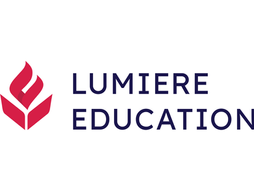
How To Make Money as a PhD Student - 8 Great Ways to Get Started

The Summer Law Institute by Legal Outreach - Should You Apply?

Everything You Need To Know About NASA's Student Launch Challenge for Middle School Students

10 Free Online Reading Programs for Middle School Students
The Complete Guide To Publishing Your Research In High School
Publishing academic research is becoming a common way for the top high school students to distinguish themselves in the admission process. Yet, for many students what publication is and how to approach it is unclear and confusing. This guide’s goal is to provide a starter for any students interested in research and publication. It comes from the result of working with 500+ students as part of the Lumiere Research Scholar Program.
What does it mean to “Publish Your Research?” What does publication even mean? In short, publishing your research means that you have gone through a rigorous, peer-reviewed process that has analyzed, critiqued, and ultimately accepted your research as legitimate. Scientific publications are gatekeepers to the broader world. If a research piece is not published by a journal, it means that it has not yet passed a rigorous, external analysis of the research.
Publications use a process called the “peer review” which means that fellow researchers in the same field will analyze the paper and its contribution and give feedback to the authors. This process is often double-blind, meaning that the reviewer does not know who the author is and the author does not know who the researcher is.
Is it possible for a high school student to publish their research? The short answer is yes. The longer answer, detailed below, is that there are many different types of journals that have different selectivity rates and bars for rigor. Just like universities, some publications are extremely competitive and provide a very strong external signal for the author. Some journals are less competitive and so provide a less powerful signal. For high school students, there is an emerging group of journals focused on high school or college-level research. These journals understand the limitations of high school students and their ability to do research, and so they are often more feasible (though still difficult) for students to get into. We’ll explore some types of those journals below.
Why publish your research in high school But, why even go to the trouble of publishing? Does it really matter? The short answer again is that it does matter. Publication in a top journal, like the Concord Review , can provide a valuable signal to a college admission officer about your work.
One thing to consider is who is an admission officer (for US universities). These people are usually generalists, meaning they have a broad background, but do not have researcher-level depth in many fields. That means it’s difficult for them to distinguish good research from bad research. What is rigorous and what is just put on an application?
This means that admissions officers search for signals when evaluating research or passion projects. Was the project selected into a selective journal? Did it go through a peer-review process by respected researchers? Was it guided by a researcher who the admission officer would believe? Did the research mentor guide speak positively about the student? All of these are positive signals. The publication is thus not the only way to signal ability, but it is one of the most important for young researchers.
What type of research can get published?
Most types of research can be published. But, the more original research that you can do, the broader the options you have. In other words, if you write a literature review, then your writing and synthesis must be very strong for it to be eligible for most publications. If you do some form of data collection or new data analysis, then the bar for rigor in student publications is usually a little bit lower as the difficulty to do this type of data collection or analysis is higher.
Types of Publication Targets
At Lumiere, we think of publications like students think of universities. There are research journals (most selective), target journals, and safety journals. In short, journals range in their selectivity and rigor. The more selective the journal, the better a signal it gives.
Highly Selective High School & College Publications
The first type of journals that students should think about are highly selective high school & college-level publications. These journals include the Concord Review or the Columbia Junior Science Journal . For example, one Lumiere student’s research was recently admitted to the Cornell Undergraduate Economic Review, a rigorous college-level journal for university-level economic papers. This student was the first high school student to ever be published in the journal, a clear signal.
These journals include both a review process and a limited number of spots in the journal. The Concord Review, for example, accepts about 45 student research papers each year of an estimated 900 submissions. The Columbia Junior Science Journal, similarly, publishes between 10-20 papers each year. Most of these journals will require original research or data collection of some sort.

Rigorous, Peer Reviewed High School Publications
The next level of journals are rigorous, peer-reviewed publications. These journals, such as the Journal of Emerging Investigators or the Journal of Student Research , have a peer-review process. These journals have requirements on the type of papers that are accepted (e.g., some will accept new data analyses, some will accept literature reviews). These journals do not have a certain number of slots predefined, but they do have a bar for what type of research they will accept. For these journals, students will submit their paper and the journal will assign (or ask you to identify) a potential set of reviewers for the paper. These reviewers will be researchers in the field, who hold a PhD. The reviewers will then give back comments. The Journal of Emerging Investigators stands out here among these journals as being one of the most rigorous and providing the most in-depth, critical feedback to students.
Pay to Play Research Journals (AVOID THESE) Finally, there are some journals that are essentially “Pay-to-play” meaning that they will accept any paper as long as a fee is paid. These journals are not only not academically ethical, they can actually be a bad signal in the admission process. For example, I spoke with a former Harvard Admission Officer, Sally Champagne , about her experience with publications. During the late 2000s, there was a high spike in students from Russia submitting “publications” that all linked back to a few fraudulent journals.
You can spot a fraudulent journal if there is a high fee for submitting the paper (some journals will charge a nominal fee to recoup their costs. That is OK, especially if they have a financial aid waiver). If any paper you submit is accepted without any revisions or feedback, then this is also a sign that the publication is not rigorous.
PhD Level Publications in A Field Finally, there are publications that PhD researchers or professors target with their research. These journals are highly selective and can take years of back and forth in order for a paper to be admitted. In general, we do not recommend high school students who are working on independent projects to target these journals for their difficulty and time required. The most common way to target these journals is if you act as a research assistant for a researcher on an existing project and you are credited as a supporting author.
Other Publication Options Beyond journals, there are other ways to showcase your research. I highlight some of those below.
Practitioner publications Another way to showcase your work is to target respected practitioner publications. These are places where non-researchers go to learn about developments. For example, one student in Lumiere published a piece in Tech In Asia summarizing his research on Open Innovation and the Ventilator Market (Tech In Asia is the Tech Crunch equivalent in South East Asia). Other practitioner publications include Online Magazines like Forbes or the Financial Times, local newspapers, or online blogs like the Huffington Post can all serve as possible targets. Generally publications in these places requires direct contact with an editorial manager, who can take a call as to whether your work is appropriate or not. To get to these editorial managers, you’ll need to do some online search and send them a pitch email that explains why your work is relevant to their audience. Offering an “exclusive” can be one additional way to make it attractive to the editors.

Research Conferences Another place to showcase your research is in research conferences. In some fields, like computer science, conferences are actually more common places to publish work than journals. One advantage of research conferences is that they often will accept abstracts of research instead of full-length research articles, making the amount of effort required to get accepted lower. As well, many conferences want more researchers to populate the conference, again making the admission process easier. Example conferences for high school students to look at include the Harvard Science Research Conference or the Sigma Xi Annual Meeting . There are also field specific conferences that you should search for based on your research paper.
Competitions
Finally, a common way to showcase your research is in the form of a student competition. Science fairs, such as ISEF Regeneron , is one common way for students to showcase their work. But, there are dozens of others, including the Genius Olympiad (Environmental Issues), John Locke Essay Competition , or the STEM Fellowship Competition . Competitions can be one of the highest impact ways to show your work because it’s clear signaling. If you can win a competition with hundreds of entrants, then being able to write about it in your application shows your unique ability. In addition, competitions can often be submitted to parallel with other research publications (check your publications requirements before doing that though!).
The Final Word – Publication Can Be High Impact If you have already written a research paper, then I highly encourage you to think about submitting it to high school or college level publications. The majority of work that you have done is spent on the research paper itself. So, if you can spend an additional 10-20 hours to showcase your research, then it’s highly valuable for you.
FAQ About Publications 1. Do I need to publish my research for it to be impactful? No, but it provides a useful signal. Doing research alone is a rare and impressive way for students to showcase their academic depth. If you can publish that research, it adds a layer of external legitimacy to that research.
2. Can I publish a research that is a literature review?
Yes, though, you’ll have to think of which target journals accept that. For example, the Journal of Student Research and the STEM Fellowship Journal both accept literature reviews, but the Journal of Emerging Investigators does not. In general, the more original research that you do (i.e., data analysis, data collection, etc.) the broader the range of publications you can target. With that said, some fields (e.g. astrophysics) can be particularly difficult to do new data collection as a high school student, so for those fields a rigorous literature review is usually the best choice.
3. Are all publications the same?
No. Publications are like universities. Some are highly respected, selective, and rigorous and others are not. The key is for you to identify a journal that is as selective/respected as possible that you can get into. Watch out for pay-to-play journals, as they can become negative signals for you and your application.
Additionally, you can also work on independent research in AI, through Veritas AI's Fellowship Program!
Veritas AI focuses on providing high school students who are passionate about the field of AI a suitable environment to explore their interests.
The programs include collaborative learning, project development, and 1-on-1 mentorship. These programs are designed and run by Harvard graduate students and alumni and you can expect a great, fulfilling educational experience. Students are expected to have a basic understanding of Python or are recommended to complete the AI scholars program before pursuing the fellowship.
The AI Fellowship program will have students pursue their own independent AI research project. Students work on their own individual research projects over a period of 12-15 weeks and can opt to combine AI with any other field of interest. In the past, students have worked on research papers in the field of AI & medicine, AI & finance, AI & environmental science, AI & education, and more! You can find examples of previous projects here .
Location : Virtual
$1,790 for the 10-week AI Scholars program
$4,900 for the 12-15 week AI Fellowship
$4,700 for both
Need-based financial aid is available. You can apply here .
Application deadline : On a rolling basis. Applications for fall cohort have closed September 3, 2023.
Program dates : Various according to the cohort
Program selectivity : Moderately selective
Eligibility : Ambitious high school students located anywhere in the world. AI Fellowship applicants should either have completed the AI Scholars program or exhibit past experience with AI concepts or Python.
Application Requirements: Online application form, answers to a few questions pertaining to the students background & coding experience, math courses, and areas of interest.
Stephen is one of the founders of Lumiere and a Harvard College graduate. He founded Lumiere as a PhD student at Harvard Business School. Lumiere is a selective research program where students work 1-1 with a research mentor to develop an independent research paper - apply here !
- Request Info
- Current Students
- Collaborators
- Faculty & Staff
The High School Journal
Manuscript submissions and review process, instructions for manuscript submission.
Authors should submit original manuscripts through ScholarOne . New users will be required to create an account. Manuscripts under review at the High School Journal cannot be under consideration or review for publication elsewhere.
Scholarly research should aim to be no more than 8,000 words in length, excluding references.
Practitioner commentaries should be no longer than 2,000 words in length.
Out of consideration for authors’ time, the High School Journal accepts initial submissions formatted with in-line citations and bibliographies in the authors’ preferred citation format (e.g. APA, Chicago, etc.).
If, after review and revision, a manuscript is accepted for publication, the author will be expected to submit the final version formatted according to the most recent edition of the Publication Manual of the American Psychological Association (APA) .
Manuscripts should be written in plain English, with enough detail that the work can be broadly understood by the Journal ’s diverse readership.
Manuscripts submitted for peer review should not identify any author of the work. This does not mean all self-references must be blinded, but that they should be blinded in cases where the text specifically indicates authorship.
For example, if an author named Amy Johnson cites herself in the following context, blinding is not necessary: “High schools are an important venue for adolescent development (Johnson, 2022).
The following scenario also does not require blinding: “Johnson (2022) demonstrated that high school students experience high levels of anxiety during exams.”
However, she should blind any self-reference in scenarios such as: “I use a survey instrument I designed and validated in previous work (Johnson, 2022).” In this case, the first-person reference reveals the author, so the self-citation should be replaced with “Author” and the publication year, as in: “I use a survey instrument I designed and validated in previous work (Author, 2022).”
Abstract and keywords
Along with your manuscript you will submit a short summary of the work in no more than 200 words, as well as a list of suggested keywords. These elements are particularly important in the selection of reviewers, and to help others find your work after publication.
Review Process
All submissions will be screened for scope and quality by an Editor. Manuscripts that do not fit the Journal ’s aims, or of a quality that is unlikely to meet the Journal ’s standards will be desk-rejected.
All manuscripts that pass this initial screen will advance to double-blind peer review. Our commitment to training doctoral students means that one review will come from a current doctoral student from our Student Editorial Board, and two will come from external reviewers with a doctoral degree. All reviews will be considered when making decisions about the final disposition of a manuscript. Our aim is to send authors an initial decision on their manuscript as expediently as possible.

Questioz Inspiring Inquiry International Journal for H igh School Research
Questioz stands as a premier international online journal showcasing high school research across diverse academic realms, from Humanities and Natural Sciences to Mathematics, Engineering, and Social Sciences. Entirely managed and run by high school students, Questioz serves as an unparalleled platform fostering intellectual curiosity and academic inquiry among high school scholars worldwide.
Our mission is to empower students to exhibit their scholarly achievements on a global stage, offering a unique avenue to gain recognition for their academic endeavours. Questioz aims to amplify students' contributions to their respective fields of study and facilitate the dissemination of their impactful research to a global audience.
Publication Tracks
Questioz will publish research articles and research essays from the field of Science, Social Science and Humanities. Questioz only publishes research articles from high school students with an advisor. We won’t be able to entertain student research papers without advisors. We will not edit or reply to entries where the guidelines are not followed. Guidelines of structure of the paper as given on submission guidelines page should be followed strictly.
Science
Social science .
Fascinated by Fullerenes or mulling over the Millennium Prize Problems? Interested in Mathematics, Physics, Chemistry, Earth Sciences, Physical Geography, Biology, Astronomy, and the like? Read research papers, articles and project reports pertinent to your interests, or contribute your academic work to Questioz
Exploring Game Theory or demand and supply fluctuations? Proposing novel strategies for negotiating with terror groups? Interested in Economics, Political Science, International Relations, Human Geography, Communication Studies, Education, Demography, Sociology, Psychology, Archaeology, Linguistics, Semiotics, or Anthropology? Read research papers, articles and project reports pertinent to your interests, or contribute your work to Questioz.
Down to dabble in Marxist Theory, to ponder the role of different social groups in political revolutions, or to read what your peers think about Shakespeare? Interested in Classics, History, Jurisprudence and Law, Ancient and Modern Languages, Literature, the Performing Arts, Philosophy, Religion, or the Visual Arts? Read research papers, articles and project reports pertinent to your interests, or contribute your academic work to Questioz.
Previous Issues
Vo lume III
Number of visitors on Questioz
- Computer Science
- Neuroscience
Social Sciences
Nhsjs reports.
- Submission Types
- Submission Guidelines
- Submit your research

Predictive Modelling of a Chess Player’s Style using Machine Learning
Heightened measures of divergent thinking and cognitive flexibility in arts-educated students, a comparative analysis of machine learning models for wildfire prediction, using information theory to play wordle as optimally as possible, powering the future: comprehensive strategies for enhancing efficiency and stability in organic photovoltaic cells, most viewed, tracking enzymatic hydrolysis of an amide bond using highly simplified 4-nitroanilide colorimetric substrates, 3d bioprinted organs and their effects, harvesting geothermal energy on mars for future settlement, plant-based bioremediation in water: the antibacterial and flocculating capabilities of moringa oleifera lam. seed extracts in combination with oligodynamic metal as a purifier for..., evaluation of the antibacterial activity of arabica cold brew and arabica spent coffee grounds on streptococcus mitis, downregulation of phf10 promotes proliferation, migration and epithelial-mesenchymal transition of colorectal cancer cells by activating mtor pathway, investigation of lung cancer biomarkers through in vitro cell-free dna, exploring ambroxol’s potential as a repurposed treatment avenue for parkinson’s disease, computer science, high-resolution urban heat modeling: cnn-based predictions in san francisco, injury prediction in sports: a survey on machine learning methods, how can deep learning improve lidar and radar data analysis in object detection for self-driving cars, spatial variation of water quality in nigeria, degradation of residual dyes through photocatalysis after hydrolysis of pete plastic, photodegradation of methylene blue dye using a novel nanoscale photocatalyst based on nickel and titanium complexes with 2,3-dihydroxybenzoic acid, creating a inexpensive, effective super saturated polymer out of citrus polysaccharides, stay connected, the influence of social settings on e-cigarette and alcohol us, data monetization and inequality: evidence from case studies, satellite rendezvous scheme, partnerships, why every high school researcher interested in biology should be reading nature, partnership spotlight: grammarly, a review and study on airfoils and aerodynamics, exploring optimization of the stellarator over tokamak fusion reactors: a comparative analysis, a low-cost design of vehicle-mounted door-opening warning system for active safety, the paradoxical attraction to music-induced sadness seen in adolescents, the key sectors driving vietnam’s economic development in the context of its participation in the global market, environmental science, exploring and explaining the relationship between pollution permit adoption and economic advancement, ventilation-based variable conductance approach for residential cooling energy reduction, development of a smart farming inspired termite nest solving global boiling by passive air conditioning, the role of women in shaping climate policy: an empirical analysis, popular categories.
- NHSJS Reports 296
- Biology 236
- Social Sciences 71
- Chemistry 62
- Environment 45
- Machine learning 45
- Publication Timeline
- Parent Resources
- Privacy Policy
- NHSJS Stickers
The National High School Journal of Science is a free, online, student-run and peer-reviewed research journal that is targeted towards high school students. Striving to bring science to a wider audience and engaging students in learning beyond the classroom walls, our journal hopes to expose young people to new ideas and topics. This high school student-run science journal always welcomes aspiring scientists to submit articles and to get involved with our publishing process.
© NHSJS 2020
- About NHSJS
- Get Involved
- MyU : For Students, Faculty, and Staff
Regents Professor Lawrence Que Jr. retires after 41 years at University of Minnesota

MINNEAPOLIS / ST. PAUL (8/13/2024) – Regents Professor Lawrence “Larry” Que Jr. retired from the Department of Chemistry on May 26th, 2024, after serving the University of Minnesota for more than four decades. Que’s tremendous impact in the field of bioinorganic chemistry earned him the title of Regents Professor in 2009 and election to the National Academy of Sciences in 2022.
The early years
Born and raised in Manila, Philippines, Que’s chemistry career began in the undergraduate chemistry program at the Ateneo de Manila University in Quezon City, Philippines. He earned his bachelor’s degree 1969 before arriving at the University of Minnesota to continue his chemistry education in the PhD program, which he completed in 1973. During his PhD, Que was advised by Louis H. Pignolet. Throughout his doctoral studies, Que used NMR spectroscopy to research intramolecular rearrangement reactions of transition metal complexes. He went on to conduct postdoctoral research under Professor Richard H. Holm at the Massachusetts Institute of Technology (1973-74) and under Professor Eckard Münck at the University of Minnesota (1975-77) which set the stage for his lifelong career in bioinorganic chemistry.
With his affinity for and expertise in iron chemistry firmly in place by 1977, Que started his independent career as an Assistant Professor of Chemistry at Cornell University. While at Cornell, Que utilized Resonance Raman spectroscopy to study dioxygenases; these enzymes would ultimately form the bedrock of Que’s research for the next 40 years.
Return to Minnesota
In 1983, Que returned to the University of Minnesota, this time as a member of the faculty. “Returning to Minnesota was the best decision I ever made for my career,” Que says. “I fell in love with this department during graduate school. I was very happy to have the opportunity to return, it’s been an honor to contribute to building our program for the last four decades.”
Described in more than 550 publications, Que’s research spanned the subfields of stereochemistry, catalysis, and crystallography. He established himself as an expert and innovator in bioinorganic chemistry, playing a pioneering role in understanding the function that nonheme iron centers play in dioxygen activation in biology. His work produced the first synthetic models for high-valent iron-oxo intermediates, which are crucial for understanding the electronic structures, spectroscopic properties, and reactivities of these units. Additionally, Que led efforts to create functional models for various iron oxygenases, including catechol dioxygenases, α-ketoglutarate-dependent oxygenases, and cis-dihydroxylating arene dioxygenases. These chemical tools aim to perform two specific types of chemical reactions that enable stereospecific alkane hydroxylation and highly enantioselective olefin cis-dihydroxylation. These advancements could lead to more environmentally friendly and sustainable alternatives to current heavy-metal oxidation catalysts. Que’s key dioxygen discoveries were published in ACS Chemical Reviews in 2004, in an article titled “Dioxygen Activation at Mononuclear Nonheme Iron Active Sites: Enzymes, Models, and Intermediates ;” this paper would turn out to be the most cited work of his career. His prolific research portfolio garnered invitations to present more than 400 lectures around the world.
Over the years, Que’s research group focused on the topics of iron, oxygen, and biocatalysis in the area of bioinorganic chemistry, The group’s primary effort, involving a combination of biochemical, synthetic inorganic, and spectroscopic approaches, was aimed at elucidating the oxygen activation mechanisms of nonheme iron enzymes, designing functional models for such enzymes, trapping and characterizing reaction intermediates, and developing bio-inspired oxidation catalysts for green chemistry applications. Que advised 55 graduate students and 80 postdoctoral researchers over the course of his career. Over 50 Que Group alumni have tenure-track or tenured faculty positions in colleges or universities.
Que’s critical dioxygen research earned him the title of Regents Professor in 2009. A quote from the citation for the award reads “Undoubtedly, Professor Que is currently the top bioinorganic chemist in the world. In his chosen field, oxygen activation of iron-containing enzymes and biomimetic compounds, his group, in my estimation, is at least three years ahead of his closest competitors. Almost single-handedly he has developed the major fraction of the synthetic chemistry of iron in high-oxidation states. This chemistry is vital to our understanding of many processes in biochemistry, to the development of new drugs, and most importantly, to developing a green chemistry that can alleviate the problems caused by pollutants and pathogens that afflict human health." The Regents Professorship is the highest honor the University of Minnesota bestows on its faculty. The title recognizes faculty who have made exceptional contributions to the University through teaching, research, scholarship, or creative work, and contributions to the public good.
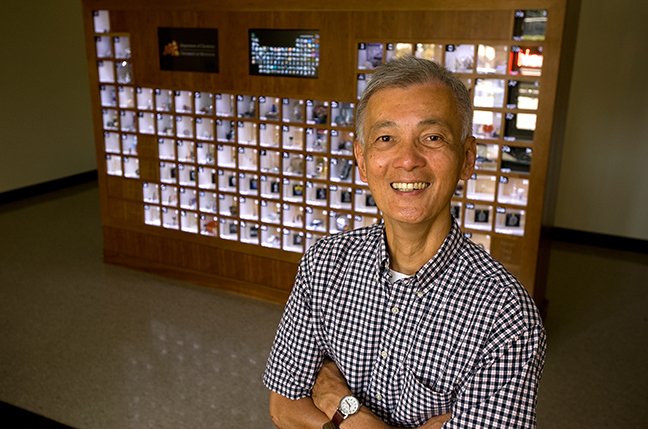
Beyond his research success, Que demonstrated significant commitment to service to the University across his career. He is credited with establishing the University of Minnesota as a world-renowned center of excellence in bioinorganic chemistry. He organized the International Conference on Oxygen Intermediates in Nonheme Metallobiochemistry (1996) and the Ninth International Conference on Biological Inorganic Chemistry (1999). From 1999 to 2002 – and again from 2008 - 2012 – he served as the inaugural PI on the National Institutes of Health Chemistry-Biology Interface Training Grant that brings faculty and students from various departments together. He also led the effort to establish the University of Minnesota Center for Metals in Biocatalysis, which allowed faculty and students from multiple units to collaborate in exploring the roles of metals in biology.
Que was the first editor-in-chief of the Springer Journal of Biological Inorganic Chemistry (JBIC) and served the journal for 20 years . JBIC – the official journal of the Society of Biological Inorganic Chemistry since 1996 – is a peer-reviewed journal promoting the field of biological inorganic chemistry internationally. The publication aims to provide insight into systems of metals in biology at biochemical, molecular, and cellular levels.
For his research, service, and mentorship, Que has been honored with many awards over the course of his career. These honors include the 3M/Alumni Distinguished Professorship (1999), the National Institutes of Health MERIT Award (2000), the UMN Distinguished Teaching Professorship (2000), the Royal Society of Chemistry Inorganic Reaction Mechanisms Award (2011), and the American Chemical Society Award in Inorganic Chemistry (2017). He was also elected a fellow of the American Association for the Advancement of Science in 2001, a fellow of the Royal Society of Chemistry in 2008, and a fellow of the American Chemical Society in 2011. In 2022, Que was elected to the National Academy of Sciences. Membership in the NAS is one of the highest honors given to a scientist or engineer.
LQ Fest: 40 Years of Fun with Iron Chemistry at the University of Minnesota
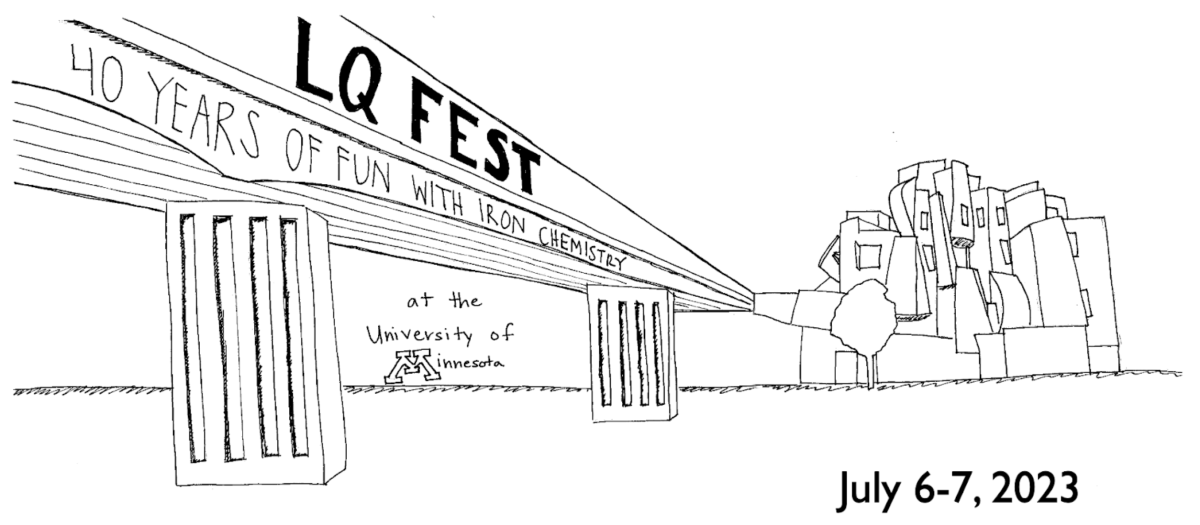
In July 2023, the Department of Chemistry hosted LQ Fest: 40 Years of Fun with Iron Chemistry at the University of Minnesota in honor of Que. 19 of Que’s collaborators, mentees, and even his daughter, Emily Que – who is an Associate Professor of Chemistry at the University of Texas at Austin – presented lectures, stories, and memories related to Que’s research and career. When recalling the event he said “I’ve loved my job. I’ve loved the people that I’ve worked with. I spent the last 50 years of my life dedicated to chemistry, and I never looked back. The event was a wonderful opportunity to get together with many people that I’ve cared about to celebrate my career.”
The next chapter
“Nothing changes, really. I’ve always thought about chemistry, and I’ll continue to think about chemistry all the time,” Que said. In this next chapter of life, Que is adopting a come what may attitude. He says he is looking forward to spending more time with his grandchildren in Texas and embarking on new adventures with his wife.
Memories and Notes from the Chemistry Faculty
"Larry is an extraordinary scientist who has made incredible discoveries in the field of bioinorganic chemistry that have changed the way we think about how important iron-containing enzymes work. His passion for research is unparalleled, and his infectious enthusiasm has made a difference in the lives of many students over his career. His leadership was critical in making UMN a respected centerpiece of high quality bioinorganic chemistry research and teaching, well-known across the globe. On a personal level, I am deeply grateful for his mentorship during my career at the University of Minnesota; his insights and advice made a major difference in my life! Thank you, Larry, and congratulations on your retirement!" – Professor Bill Tolman, Dean, College of Arts & Sciences, St. Thomas University
"The University of Minnesota Department of Chemistry has been lucky to count Prof. Larry Que among our faculty. His chemical creativity and passion have had a big impact on bioinorganic chemistry as a field, and his thoughtfulness as a colleague has had a major impact on our department community." – Professor Christy Haynes, Chemistry Department Head
"Larry has been a standout in the bioinorganic community, rising to the highest levels of academic achievement at the University of Minnesota as a Regent’s professor, and nationally, as a member of the National Academy of Sciences. I have always appreciated his scholarly approach to studying catalysis at the fundamental level for connecting with biology. When I joined the department in 2012, starting my lab’s research program in chemical biology, I always loved hearing from the outside community of what high regard they held for him as a giant in the field of iron-mediated (bio)catalysis. I also benefited significantly from Larry’s effort for initiating our NIH T32 Chemistry and Biology Interface training grant (CBITG), for which he served as the first director, and established a trajectory of continual funding for the next 25 years. This grant has impacted the careers of well over 100 graduate students, and has been a true gem of the three departments of Chemistry, Biochemistry, Molecular Biology, and Biophysics (BMBB) and Medicinal Chemistry. Beyond being a true iron man in his field, one of Larry’s main legacies is a long track record of highly successful trainees, which was on full display at last year’s retirement party, Larry Que Fest. He’s leaving our department having made an indelible mark and will be deeply missed. " – Professor William C.K. Pomerantz
Related news releases
- Smith Professor Erin Carlson wins 2024 Cottrell SEED Award
- Krause, Penn, Tuga, and Umanzor earn Diversity, Equity, and Inclusion Leadership Showcase Awards
- Joint Safety Team featured in ACS Chemical Health & Safety
- Seven graduate students honored with Doctoral Dissertation Fellowships
- Distinguished University Teaching Professor Philippe Bühlmann receives President's Award for Outstanding Service
- Future undergraduate students
- Future transfer students
- Future graduate students
- Future international students
- Diversity and Inclusion Opportunities
- Learn abroad
- Living Learning Communities
- Mentor programs
- Programs for women
- Student groups
- Visit, Apply & Next Steps
- Information for current students
- Departments and majors overview
- Departments
- Undergraduate majors
- Graduate programs
- Integrated Degree Programs
- Additional degree-granting programs
- Online learning
- Academic Advising overview
- Academic Advising FAQ
- Academic Advising Blog
- Appointments and drop-ins
- Academic support
- Commencement
- Four-year plans
- Honors advising
- Policies, procedures, and forms
- Career Services overview
- Resumes and cover letters
- Jobs and internships
- Interviews and job offers
- CSE Career Fair
- Major and career exploration
- Graduate school
- Collegiate Life overview
- Scholarships
- Diversity & Inclusivity Alliance
- Anderson Student Innovation Labs
- Information for alumni
- Get engaged with CSE
- Upcoming events
- CSE Alumni Society Board
- Alumni volunteer interest form
- Golden Medallion Society Reunion
- 50-Year Reunion
- Alumni honors and awards
- Outstanding Achievement
- Alumni Service
- Distinguished Leadership
- Honorary Doctorate Degrees
- Nobel Laureates
- Alumni resources
- Alumni career resources
- Alumni news outlets
- CSE branded clothing
- International alumni resources
- Inventing Tomorrow magazine
- Update your info
- CSE giving overview
- Why give to CSE?
- College priorities
- Give online now
- External relations
- Giving priorities
- CSE Dean's Club
- Donor stories
- Impact of giving
- Ways to give to CSE
- Matching gifts
- CSE directories
- Invest in your company and the future
- Recruit our students
- Connect with researchers
- K-12 initiatives
- Diversity initiatives
- Research news
- Give to CSE
- CSE priorities
- Corporate relations
- Information for faculty and staff
- Administrative offices overview
- Office of the Dean
- Academic affairs
- Finance and Operations
- Communications
- Human resources
- Undergraduate programs and student services
- CSE Committees
- CSE policies overview
- Academic policies
- Faculty hiring and tenure policies
- Finance policies and information
- Graduate education policies
- Human resources policies
- Research policies
- Research overview
- Research centers and facilities
- Research proposal submission process
- Research safety
- Award-winning CSE faculty
- National academies
- University awards
- Honorary professorships
- Collegiate awards
- Other CSE honors and awards
- Staff awards
- Performance Management Process
- Work. With Flexibility in CSE
- K-12 outreach overview
- Summer camps
- Outreach events
- Enrichment programs
- Field trips and tours
- CSE K-12 Virtual Classroom Resources
- Educator development
- Sponsor an event
Dr. Michael Andreae’s Manuscript Wins Best Paper of the Year Award
Anesthesiology department, department of anesthesiology research.
The University of Utah School of Medicine Department of Anesthesiology has research opportunities for students and a research grant program for our academic faculty.
We are thrilled to announce that Dr. Michael Andreae and his research team have been honored with the Best Paper of the Year award by the Journal of Cognitive Engineering and Decision Making for their manuscript titled, "Adapting Cognitive Task Analysis Methods for Use in a Large Sample Simulation Study of High-Risk Healthcare Events." This prestigious award recognizes their exceptional work in the field of medical decision-making.
The manuscript is part of an AHRQ-funded multi-center study led by Dr. Weinger at Vanderbilt University. It delves into the use of cognitive task analysis methods to study decision-making processes during simulated perioperative crises. By adapting cognitive interviews for a large-scale trial involving over 100 anesthesiologists, Dr. Andreae’s team has provided groundbreaking insights into how clinicians navigate high-stakes medical situations.
Congratulations to Dr. Andreae and his team for this outstanding achievement and for advancing our understanding of critical decision-making in healthcare.


IMAGES
COMMENTS
Pursuing research at the high school level is one of the best ways for you to demonstrate co-curricular academic competence. Getting this study published is an added bonus because it will give your research a certain amount of credibility and backing.High school students might find guidance on how to conduct their research, but very few are familiar with academic journals that publish high ...
We'll delve into 20 prominent journals to publish your research in high school providing insight into their focus areas, submission processes, and impact within the academic community.
For young writers undertaking a high school research project and understanding how to publish a research paper for students is crucial. Knowing how to identify the right research question and understanding where to publish your research paper are key steps in this journey.
IJHSR is published since 2019 and is the leading high school research journal to select the highest quality of high school student research work in any area of science, including behavioral and social sciences, technology, engineering, and math.
Journal of Student Research (JSR) is an Academic, Multidisciplinary, and Faculty-reviewed Journal (Houston, Texas) devoted to the Rapid Dissemination of Current Research Published by High School Edition, Undergraduate and Graduate students.
However, publishing research increasingly becomes the " gold " that a college Admission Officer is looking for. Publication in leading journals, like Concord Review, or International Journal for High School Students can showcase your ability and determination to a college admission officer when you apply for college.
The Columbia Junior Science Journal (CJSJ) is a high school research journal seeking original research papers and review articles. We provide high school students with a platform to publish manuscripts in the fields of natural sciences, physical sciences, engineering, and social sciences.
Browse All Articles. JEI is a scientific journal for middle and high school scientists.
A peer reviewed STEAM Journal that publishes research and ideas of high school students.
Learn how to publish research as a high schooler with our comprehensive guide. Get tips, resources, and step-by-step instructions to start your academic journey.
Publishing academic research is becoming a common way for the top high school students to distinguish themselves in the admission process. Yet, for many students what publication is and how to approach it is unclear and confusing. This guide's goal is to provide a starter for any students interested in research and publication.
Introduction Hi! We are college students in CUSJ, the Columbia Undergraduate Science Journal. From high school, we became interested in trying out research and working to make scientific discoveries. We put together this high school guide to research with all of the information that we wish we had known when we started out in high school. From learning about different fields to conducting your ...
The Curieux Academic Journal publishes unique and exceptional research from high school students nationwide. We allow students to publish in a peer-reviewed journal and provide them with a platform to continue persuing their passions through their high school career.
During high school, students have a great opportunity to publish their original research work in well-known research journals. If you're interested in participating in research during college, submitting to journal research sites will show your level of knowledge in research, and stand out to college admission officers as an example that you're capable of doing advanced research in college ...
The steps to get published in high school actually aren't that hard. There are journals out there that receive and publish high schoolers' writing.
The National High School Journal of Science is a student-run research journal that publishes peer-reviewed research papers by high school students. The Journal is online, free, and maintains a high standard for publication.
The High School Journal publishes research, scholarship, essays, and reviews that critically examine the broad and complex field of secondary education.
It is important to note that the platform offers students the necessary opportunity to display their research and writing experience in quality journals and articles. Moreover, it also seeks the engagement of high school students in disseminating research papers under the guidance of research advisors.
Publishing academic research is becoming a common way for the top high school students to distinguish themselves in the admission process. Yet, for many students what publication is and how to approach it is unclear and confusing. This guide's goal is to provide a starter for any students interested in research and publication.
Format Out of consideration for authors' time, the High School Journal accepts initial submissions formatted with in-line citations and bibliographies in the authors' preferred citation format (e.g. APA, Chicago, etc.). If, after review and revision, a manuscript is accepted for publication, the author will be expected to submit the final version formatted according to the most recent ...
Publication Tracks Questioz will publish research articles and research essays from the field of Science, Social Science and Humanities. Questioz only publishes research articles from high school students with an advisor. We won't be able to entertain student research papers without advisors.
Tracking Enzymatic Hydrolysis of an Amide Bond Using Highly Simplified 4-nitroanilide Colorimetric Substrates. Authors: Allen Chen*, Ayeeshi Poosarla*, Andrew Liang Peer Reviewer: Khola Abid Professional Reviewer: Edward Njoo Abstract Proteases, enzymes that hydrolyze peptide bonds, have tremendous implications ranging from the...
Navigate Academic Journals for High School Students: Learn what you should know about accessing and contributing to scholarly publications on our official page.
MINNEAPOLIS / ST. PAUL (8/13/2024) - Regents Professor Lawrence "Larry" Que Jr. retired from the Department of Chemistry on May 26th, 2024, after serving the University of Minnesota for more than four decades. Que's tremendous impact in the field of bioinorganic chemistry earned him the title of Regents Professor in 2009 and election to the National Academy of Sciences in 2022.
We are thrilled to announce that Dr. Michael Andreae and his research team have been honored with the Best Paper of the Year award by the Journal of Cognitive Engineering and Decision Making for their manuscript titled, "Adapting Cognitive Task Analysis Methods for Use in a Large Sample Simulation Study of High-Risk Healthcare Events."